An Epicenter of INNOVATION

Tomorrow’s standard of ear, nose, throat, head and neck care is forged from a Mass Eye and Ear tradition nearly 150 years in the making.
Department of Otolaryngolog y Head and Neck Surger y
Fall 2022, vol. 18, no. 2
News from the Harvard Medical School Department of Otolaryngology–Head and Neck Surgery

Fall 2022 | Vol. 18, No. 2
Published twice per year.
Please send comments, requests for additional copies and other inquiries regarding this issue to:
Michael Kotsopoulos
Senior Communications Manager
Department of Otolaryngology–Head and Neck Surgery
Massachusetts Eye and Ear 243 Charles Street, Boston, MA 02114 mkotsopoulos@meei.harvard.edu
CONTRIBUTORS
Editor-in-Chief
Mark A. Varvares, MD, FACS
John W. Merriam and William W. Montgomery Professor and Department Chair of Otolaryngology–Head and Neck Surgery
Harvard Medical School
Chief of Otolaryngology–Head and Neck Surgery Massachusetts Eye and Ear Massachusetts General Hospital
Managing Editor | Writer
Michael Kotsopoulos
Cover design: Garyfallia Pagonis
Department of Otolaryngolog y Head and Neck Surger y
Beth Israel Deaconess Medical Center
Boston Children’s Hospital
Brigham and Women’s Hospital
Massachusetts Eye and Ear Massachusetts General Hospital
©2022, Massachusetts Eye and Ear
FEATURES
An Epicenter of Innovation
The Department of Otolaryngology–Head and Neck Surgery at Mass Eye and Ear has forged a tradition of innovation that has laid the groundwork for tomorrow’s standard of ear, nose, throat, head and neck care. 12
Changing Lives With a Device for the Tongue
A new study from Mass Eye and Ear and Massachusetts General Hospital has proven the safety and efficacy of using hypoglossal nerve stimulation to treat obstructive sleep apnea in children with Down syndrome. It has also uncovered exciting new clues on the treatment’s impact on neurocognition.
An Estimate for Hidden Hearing Loss
In one of the largest retrospective studies of its kind, a group of Mass Eye and Ear researchers examined data from nearly 96,000 ears to develop a wordscore model that can help estimate the amount of hidden hearing loss in humans.
Design | Layout | Photography Garyfallia Pagonis
1 Letter From the Chair
FACS 2 Multimillion-dollar NIH Grant Awarded to Develop New Gene Therapy for Usher Syndrome 20 Farewell Class of 2022 25 Alumni Giving Society 26 Alumni Profile
28 Highlights 32 Research Advances
Mark A. Varvares, MD,
John Ansley, MD, ’99
CONTENTS
4
16
Dear colleagues and friends,
Since 1824, the Department of Otolaryngology–Head and Neck Surgery at Harvard Medical School has prided itself on a commitment to four pillars: providing exceptional clinical care, conducting transformational research, training tomorrow’s medical leaders and active outreach to our communities. This fall, having completed my first year as Department Chair, I am proud to see that this commitment has endured and, better yet, is currently meeting the needs of a constantly evolving health care landscape.
The latest edition of Harvard Otolaryngology not only celebrates steps taken by our faculty and trainees to fight some of the most complex ear, nose, throat, head and neck conditions through discovery, but it also chronicles the heritage that has made such steps possible. In our cover story, Mass Eye and Ear epitomizes this heritage; its patient-centered approach to care, collaborative spirit, educational mission and unparalleled network of resources have transformed the institution into an epicenter of innovation in Greater Boston. It is on the path from idea to discovery to innovation where we have the opportunity to impact the greatest change in human health.
While innovations from all our affiliate hospitals have helped shape the trajectory of the specialty, the latest research from our laboratories reminds us that the best has yet to come. A new word-score model capable of estimating hidden hearing loss in human ears could one day help clinicians better determine the effectiveness of hearing loss interventions. A similar reminder permeates inside our clinics, where research on hypoglossal nerve stimulation in children with Down syndrome has encouraged investigators to imagine the effects of the treatment on neurocognition. The excitement about the future of otolaryngology is palpable throughout this publication. My hope is that you feel equally inspired reading about our collective path forward as you do reading about the lessons learned along the way.
As always, I thank you for your interest and support of our department’s research, initiatives and activities.
Sincerely, Mark A. Varvares, MD, FACS


The John W. Merriam and William W. Montgomery Professor and Chair
Department of Otolaryngology–Head and Neck Surgery, Harvard Medical School
Chief, Departments of Otolaryngology–Head and Neck Surgery, Massachusetts Eye and Ear Massachusetts General Hospital
1 HARVARD Otolaryngology
LETTER FROM THE CHAIR
Multimillion-dollar NIH Grant Awarded to Develop New Gene Therapy for Usher Syndrome
in the Department of Chemistry and Biochemistry at The Ohio State University, both of whom will serve as multi-PIs through the NIH’s novel multi-PI grant mechanism.
“This structural approach to protein engineering has advanced well ahead of where it was a few years ago,” Dr. Indzhykulian said. “We have reason to believe this technique could be applied to treatments for a variety of hereditary conditions as complex and debilitating as Usher syndrome type 1F.”
For years, the sheer size of genes responsible for complex hereditary disorders has stood in the way of life-changing treatments. These genes are often too large for conventional gene therapy tools—an enormous problem that Artur Indzhykulian, MD, PhD, Assistant Professor of Otolaryngology–Head and Neck Surgery at Harvard Medical School and Assistant Scientist at Mass Eye and Ear, has proposed a bite-sized solution to
Thanks to a new five-year $3.7 million R01 grant from the National Institutes of Health (NIH), a team of Principal Investigators (PIs) led by Dr. Indzhykulian is launching a multicenter study to investigate whether engineered proteins encoded by miniature genes could one

day treat the debilitating hereditary disorder Usher syndrome type 1F.
Under his new grant, Dr. Indzhykulian will serve as lead PI and will collaborate with David P. Corey, PhD, Bertarelli Professor of Translational Medical Science at Harvard Medical School, and Marcos Sotomayor, PhD, Associate Professor
Usher syndrome type 1F is a hereditary disease that occurs from a mutation to a single gene, PCDH15. The mutation results in profound deafness and lack of balance at birth and blindness that progresses over time. In recent years, gene therapies have attempted to treat cells with mutated genes using adeno-associated virus (AAV) vectors. Healthy versions of the gene are packaged inside the AAVs, which travel to a desired group of cells. The coding sequence of the healthy gene then augments the cell to correct the adverse effects of the mutation.
Unfortunately, PCDH15 is too large to fit inside a standard AAV vector. So, instead of trying to transport a full-sized version
2 HARVARD Otolaryngology NEWS
[ ]
“This structural approach to protein engineering has advanced well ahead of where it was a few years ago. We have reason to believe this technique could be applied to treatments for a variety of hereditary conditions as complex and debilitating as Usher syndrome type 1F.” –Artur Indzhykulian, MD, PhD
Artur Indzhykulian, MD, PhD, at work inside his laboratory.
Left: The extracellular part of the protein encoded by a healthy PCDH15 gene, which is approximately 55 nanometers (nm) long.

Right: The extracellular part of the protein variant encoded by a miniature PCDH15 gene. The variant is approximately 37 nm long, but still mimics the function of the longer protein derived from a natural PCDH15 gene.
Images courtesy of the laboratory of Artur Indzhykulian, MD, PhD, based on a model generated by Pedro De-la-Torre, PhD. The image on the left is based on the protein structure solved by the Sotomayor Laboratory.

of the gene, Dr. Indzhykulian and his colleagues have created miniature PCDH15 genes that can fit inside an AAV without compromising their ability to encode effective, albeit smaller, variations of the proteins needed to rescue hearing and balance.
“In a very basic sense, we’re trying to shrink a limousine so it can fit inside a very tiny parking spot,” said Dr. Indzhykulian, comparing the limousine to the PCDH15 gene. “We wouldn’t want to remove the engine or the wheels, or else the vehicle wouldn’t work. But, if we removed the unnecessary extra seating in the middle of the vehicle, then the limousine can fit in the spot without having to sacrifice the parts that allow it to run.”
Funding from the grant will allow the investigators to carry out preclinical evaluation of the novel therapy. Together, they will test the effectiveness of the miniature proteins to restore hearing and balance in mice missing a Pcdh15 gene and test the toxicity of the proteins in non-human primates. If successful, these miniature gene constructs could ultimately pave the path to a clinical trial. n
World Medical Innovation Forum
Apair of faculty members from the Department of Otolaryngology–Head and Neck Surgery at Harvard Medical School appeared at the 2022 World Medical Innovation Forum in May.
Presented by Mass General Brigham, the forum featured speakers from industry, academia and government who are shaping the future of gene and cell therapies. The following faculty members were featured for promising innovations that could lead to future diagnostics and treatments to some of the world’s most pressing ear, nose, throat, head and neck challenges:
Albert Edge, PhD

Professor of Otolaryngology–Head and Neck Surgery, Harvard Medical School
Director of the Tillotson Cell Biology Unit, Mass Eye and Ear


Dr. Edge shared cuttingedge insights on how deafness is treated by drugs and gene-editing approaches using targets discovered in cochlear organoids.
Zheng-Yi Chen, DPhil
Associate Professor of Otolaryngology–Head and Neck Surgery, Harvard Medical School
Associate Scientist, Eaton-Peabody Laboratories
Dr. Chen was featured on the forum’s “Disruptive Dozen” panel, a highly selective list of 12 technologies that are most likely to have a significant impact on gene and cell therapy in the next 18 months. His novel approach for regenerating hair cells in the inner ear was ranked at number nine.
3 HARVARD Otolaryngology
An Epicenter of INNOVATION
The Department of Otolaryngology–Head and Neck Surgery at Mass Eye and Ear has forged a tradition of innovation that has laid the groundwork for tomorrow’s standard of ear, nose, throat, head and neck care.

4
In 1871, Alexander Graham Bell was a little-known inventor looking to answer a question that had pestered him for years: How, exactly, do vibrations in the air produce sounds heard by the human ear?


Bell wanted to perfect a device used to record sound and—unaware of the seminal moment in history about to unfold—sought the expertise of Clarence John Blake, MD, the first Professor and Chairman of the Department of Otology at Harvard Medical School and Mass Eye and Ear. The two met in Boston, where Dr. Blake would offer Bell a specimen to study from a collection of human temporal bones at Harvard.
Within months, insights observed from the specimen had prompted Bell to imagine a new type of device; one that would allow people to communicate from dozens of miles away. By 1876, a patent for the telephone was filed in Washington, D.C., and the rest is history.
In the nearly 150 years since Bell’s invention, technology has advanced at a breakneck pace. The medical profession, in particular, has undergone a dramatic evolution in its diagnostic capabilities and surgical approaches. Computers, robotics and artificial intelligence have helped yield modern-day breakthroughs to problems once thought too difficult to solve, and clinicians and researchers alike have become more specialized in their respective fields.
However, amid these changes, the tradition of innovation established by Dr. Blake has stood the test of time, and the Department of Otolaryngology–Head and Neck Surgery at Mass Eye and Ear has flourished into an incubator of innovation across Greater Boston.
Today, surgeons and investigators from the department continue to take a leading role in biomedical advances. In fact, according to Mass General Brigham Innovation, about one of every three researchers in the department has filed at least one disclosure for a patent—a level of innovative practice uncommon among specialty hospitals.
“To me it’s simple: Mass Eye and Ear develops clinicians and researchers who are not willing to be satisfied with the current standard of care,” explained Mark A. Varvares, MD, FACS, Chief of Otolaryngology–Head and Neck Surgery at Mass Eye and Ear and Massachusetts General Hospital and Chair of Otolaryngology–Head and Neck Surgery at Harvard Medical School. “We attract and nurture clinicians and researchers who are united in a shared vision of what the future of care should be.”
That united vision—that innovative spirit—is fueled by the department’s patient-centered approach to care, its commitment to collaboration, its educational mission and an unparalleled network of resources underpinned by a robust pipeline of federal funding.
Innovation that begins at the bedside
As of 2022, Mass General Brigham Innovation has attributed at least 49 distinct, patented inventions to 31 former and current researchers and clinicians from the Department of Otolaryngology–Head and Neck Surgery at Mass Eye and Ear. Those researchers and clinicians are credited for 86 unique licenses, four of which have brought in more than $47 million in licensing revenue from a variety of nationally recognized biotech companies.
“To me it’s simple: Mass Eye and Ear develops clinicians and researchers who are not willing to be satisfied with the current standard of care. We attract and nurture clinicians and researchers who are united in a shared vision of what the future of care should be.”
–Mark A. Varvares, MD, FACS
FEATURE
5 HARVARD Otolaryngology [ continued p. 6 ]
]
Alexander Graham Bell, (left) and Clarence John Blake, MD, Professor and Chairman of the Department of Otology at Harvard Medical School and Mass Eye and Ear, (right).
[
Photograph of Alexander Graham Bell, seated with telephone, courtesy of the National Portrait Gallery, Smithsonian Institution.
William W. Montogomery, MD, pictured with the Montgomery® T-Tube, circa early 1970s.
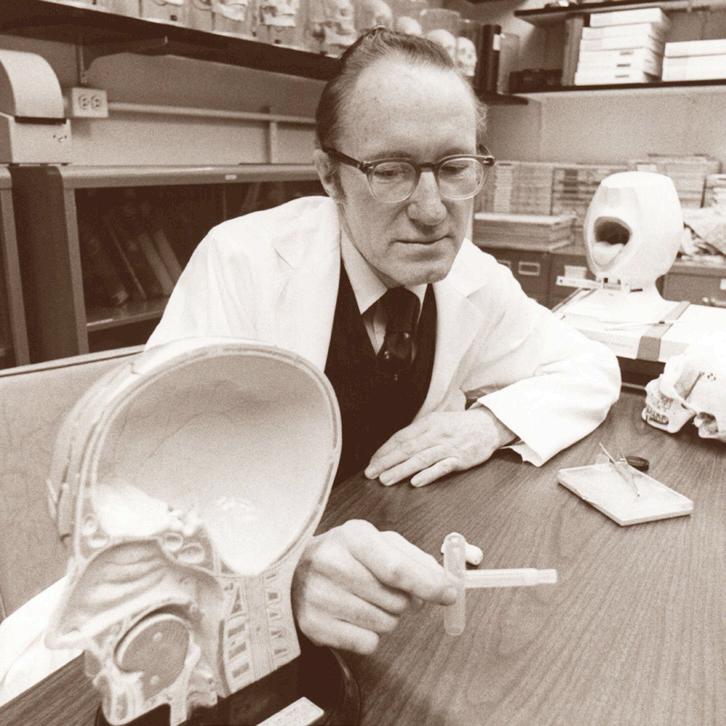
Mass General Brigham Innovation began recording patents and licenses at Mass Eye and Ear in 2020, which means the total numbers are likely higher.
Of the dozens of innovations conceived at Mass Eye and Ear, perhaps the most significant are those by the late William W. Montgomery, MD, the former John W. Merriam Professor of Otology and Laryngology at Harvard Medical School whose patient-oriented approach to innovation has helped shape 21st century surgical care.
“Dr. Montgomery was never one to evangelize innovation, he just did it,” said Dr. Varvares, who holds the William W. Montgomery Professorship at Harvard Medical School and was a former trainee and close colleague of Dr. Montgomery’s. “He saw a patient problem and asked himself, ‘How can I develop a solution?’”
According to Dr. Varvares, few inventions have impacted otolaryngology more than the Montgomery® T-Tube, invented by Dr. Montgomery in the early 1970s. Dr. Montgomery thought of the idea when treating a patient at Mass Eye and Ear who had suffered a crushed trachea from a car crash. Tracheal reconstruction for such an injury was rare at the time, and surgeons most often reverted to opening a hole in the trachea—a procedure known as a tracheotomy—to help the patient breathe. Unfortunately, the procedure provided little, if any, relief for the crushed tracheal structure, and many patients were left without a voice or the ability to breathe through the mouth.
So, Dr. Montgomery developed a new approach. Using two pieces of porcelain, he began by building a T-Tube prototype. He then developed a procedure that reconstructed the trachea with local soft tissue and used the T-Tube to keep the airway stable, allowing the patient
to breathe and speak while healing from the tracheal reconstruction. Today, the updated version of the T-Tube is the most commercialized item in the history of Boston Medical Products, a leading medical device manufacturer founded in part by Dr. Montgomery to ensure his products could reach surgeons across the world.
“There’s never been anyone like him in the history of otolaryngology that could match his innovative approach to solving patient problems,” Dr. Varvares added. “He has a long list of surgical innovations, any one of which would have been considered a crowning achievement. I doubt our specialty will see the likes of him again.”
While unmatched by few others for his level of ingenuity and attention to detail, Dr. Montgomery is not alone in his patient-centered approach to innovation. Several clinicians and researchers at Mass Eye and Ear have developed devices in response to unique ear, nose, throat, head and neck problems, including Barbara Herrmann, PhD, an Audiologist and Clinical Scientist who helped develop a modern-day, automated newborn hearing screener.
Collaboration catalyzed by faculty leadership
The high volume of patients seen at Mass Eye and Ear gives the Department of Otolaryngology–Head and Neck Surgery an advantage few start-ups can match. But, without the proper time, space or resources dedicated to investigating unique clinical problems, many valuable insights can go to waste. To prevent this pitfall, department chairs at Mass Eye and Ear have routinely encouraged clinicians to develop research projects alongside investigators whose labs are located just a few floors away, or partner with clinicians from interdisciplinary specialties at Harvard-affiliate hospitals.
In the 1980s, Dr. Herrmann and Aaron Thornton, PhD, CCC-SLP/A, a fellow Audiologist at Mass Eye and Ear, reaped the benefits of these resources when developing their infant hearing screener. At the time, the average age of identifying pediatric hearing loss was two-to-three years of age, and few otolaryngologists knew how a delayed hearing diagnosis could affect a child’s ability to speak and interpret language. Those who previously attempted to lower the average age of a diagnosis were unsuccessful, even with high-
continued 6 HARVARD Otolaryngology
AN EPICENTER OF INNOVATION
risk registries and repeated behavior testing at their disposal.
Nonetheless, Dr. Thornton’s work on auditory evoked responses (AERs) at the University of Wisconsin had caught the attention of Joseph B. Nadol, Jr., MD, an internationally renowned Otologist at Mass Eye and Ear who would later serve as Department Chair, and Nelson Kiang, PhD, the first Director of the EatonPeabody Laboratories. Drs. Nadol and Kiang recruited Dr. Thornton to Mass Eye and Ear in 1979 to establish the Auditory Evoked Response Laboratory, and Dr. Herrmann joined soon thereafter. Dr. Nadol could have limited the scope of Dr. Thornton’s work to conventional diagnostic tests, but he instead supported Dr. Thornton’s efforts to explore AER as a possible way of screening for hearing loss in children younger than two years old.
“Most people in our field did not believe in what we were trying to accomplish,” Dr. Herrmann said. “But the support we received from Dr. Nadol never wavered.”
As Drs. Thornton and Herrmann developed a device capable of detecting auditory brainstem responses in infants, Dr. Nadol encouraged the duo to partner with Ronald Eavey, MD, former Chief of Pediatric Otolaryngology at Mass Eye and Ear, and open their lab to pediatric patients in the Neonatal Intensive Care
[“Collaboration was the unsung hero of our success. If Dr. Eavey hadn’t helped open the door to Mass General, then you don’t have the automated screening method that is currently being used in nurseries around the world.”
–Barbara Herrmann, PhD
Unit at Massachusetts General Hospital. The sheer number of patients screened by Drs. Thornton and Herrmann gave them enough data to confirm that their technique could accurately detect hearing loss in children less than six months of age without an exorbitant cost. By 1985, Drs. Thornton and Herrmann had worked with a start-up company to develop their hearing screener into a commercialized product, which is sold worldwide to this day.
“Collaboration was the unsung hero of our success,” Dr. Herrmann insisted. “If Dr. Eavey hadn’t helped open the door to Mass General, then you don’t have the automated screening method that is currently being used in nurseries around the world.”
Training the next generation of innovators
Reserving time and space for research is not exclusive to clinical faculty. Rather, it’s a major pillar of the teaching mission at Mass Eye and Ear.
Top photo of Ronald Eavey, MD, former Chief of Pediatric Otolaryngology at Mass Eye and Ear.
Bottom photo of Aaron Thornton, PhD, CCC-SLP/A, (left) and Barbara Herrmann, PhD, (right) who developed the infant hearing screener, circa 1980s.
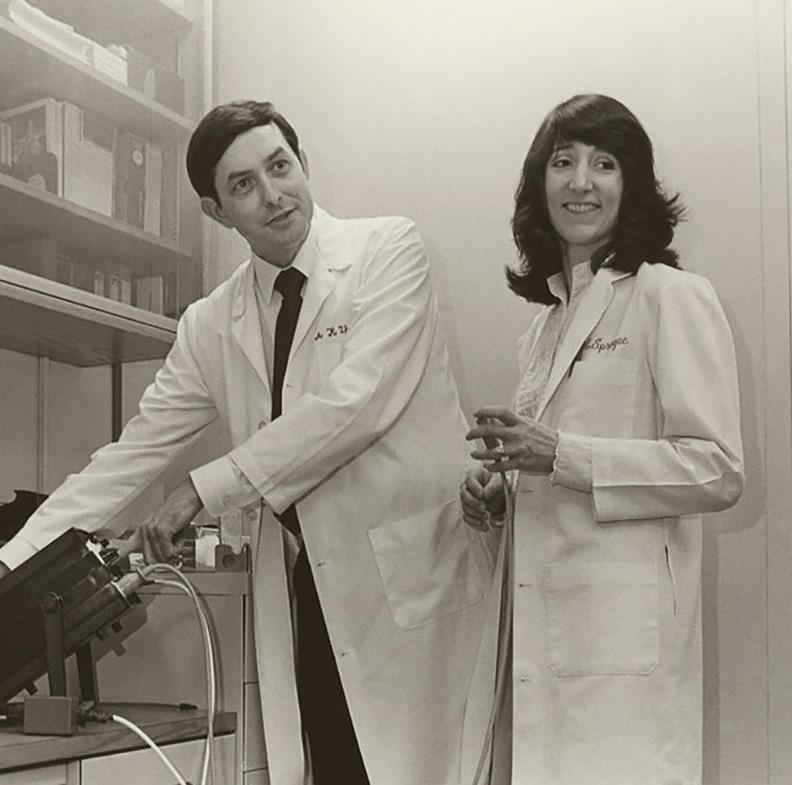

Residents from the Harvard Combined Residency Program in Otolaryngology–Head and Neck Surgery are required to complete a FOCUS project on a research topic of their choice prior to graduation, and trainees are encouraged to collaborate with faculty on conceptualizing ideas and designing experiments. With funding from a T-32 federal training grant, the program also dedicates one of its five annual residency positions to a twoyear, research-intensive elective.
Moreover, an “Issues in Research” course taught by David J. Jung, MD, PhD, FACS, Assistant Professor of Otolaryngology–Head and
7 HARVARD Otolaryngology
]
[ continued p. 8 ]
AN EPICENTER OF INNOVATION
Boston, no less—welcomes endless opportunities for collaboration, and the Gliklich Healthcare Innovation Scholars Program at Mass Eye and Ear has helped trainees use these opportunities to their advantage. The program supports participants who are designing, implementing and producing innovations in health care products, delivery, education or other transformative areas. For Nicole Black, PhD, the Vice President of Biomaterials & Innovation at Desktop Health, the opportunity to serve as a Gliklich Scholar in 2020 paved the way toward commercializing a 3D-printed eardrum developed in part by Dr. Kozin and Aaron Remenschneider, MD, MPH, a part-time Instructor in Otolaryngology–Head and Neck Surgery at Harvard Medical School.
Neck Surgery at Harvard Medical School and Medical Director of the Joseph B. Nadol, Jr., MD, Surgical Training Laboratory at Mass Eye and Ear, provides the foundational knowledge necessary for trainees to obtain critical extramural funding and undertake research projects that can lead to discovery, innovation and eventually commercialization.
“I can’t think of another specialty hospital where so many world-renowned experts from complementary disciplines can walk down the hall and solve a problem together,” said Elliott D. Kozin, MD, a 2018 graduate of the residency program who serves as an Assistant Professor of Otolaryngology–Head and Neck Surgery at Harvard Medical School and a Physician and Surgeon at Mass Eye and Ear. “During my training, I could go from treating patients on one floor to observing an animal study a few floors away.”

The close proximity of faculty from different subspecialties under one roof—in the biotech hub of
During her time as a Gliklich Scholar, Dr. Black was a bioengineering student at the Harvard John A. Paulson School of Engineering and Applied Sciences who also participated in the Harvard Speech and Hearing Bioscience and Technology Program. She conducted research in the laboratory of Jennifer A. Lewis, ScD, the Hansjörg Wyss Professor of Biologically Inspired Engineering, where she met Drs. Kozin and Remenschneider. Together, Drs. Kozin and Remenschneider had conceptualized a 3D-printed eardrum that could improve perforated eardrum treatments, but neither had the expertise needed to engineer the idea into a commercialized product. It was a problem perfect for Dr. Black to solve.
Her collaboration with both doctors catalyzed the development of the PhonoGraft ™ device, a 3D-printed biocompatible eardrum, and prompted the founding of Beacon Bio, a start-up intended to commercialize the device. Their project is currently being developed by Desktop Health.
“Dr. Black’s collaboration with Mass Eye and Ear demonstrates how engineers can work with clinicians to solve long-standing clinical problems,” said Dr. Remenschneider. “Her work represents the real potential for innovation when you combine smart, motivated engineers with clinicians who are familiar with persistent clinical challenges.”
8 HARVARD Otolaryngology
continued
From left to right clockwise: Aaron Remenschneider, MD, MPH; Nicole Black, PhD; John Rosowski, PhD; Jeffrey Tao Cheng, PhD; and Elliott D. Kozin, MD.
A network of unmatched resources
The time, space and resources needed for research, however, come at a high cost; laboratory equipment and the salaries of technicians and investigators within a research program can exceed hundreds of thousands of dollars each year. Researchers and clinicians often rely on external funding to support basic science, translational and clinical research studies, all of which help move an idea toward a patent disclosure and— ultimately—approval from the U.S. Food and Drug Administration as a commercialized product.
Few, if any, otolaryngology departments are awarded as much funding from the National Institutes of Health (NIH) as the Department of Otolaryngology–Head and Neck Surgery at Mass Eye and Ear. According to the NIH, Mass Eye and Ear received the highest amount of authorized funding from the National Institute on Deafness and Other Communication Disorders between October 2019 and September 2021. In that same time period, approximately one of every four NIH grant proposals submitted by a clinician or researcher from the department was accepted for funding.


To earn federal funding, applicants are typically required to submit preliminary data from their research; funding for such early-stage research is challenging to secure. Thankfully, the remarkable generosity of Mass Eye and Ear donors has helped bridge this gap. Support from donors provides muchneeded seed funding for early research initiatives, many of which help drive breakthroughs.
In September 2020, Mass Eye and Ear concluded its historic Bold Science. Life-Changing Cures philanthropic campaign, raising a total of $252 million, $95 million of which was earmarked for the Department of Otolaryngology–Head and Neck Surgery. This includes the largest gift in Mass Eye and Ear history—a bequest of nearly $21 million invested in the department’s hearing research program. Additionally, 18 donors have committed $1 million or more to the department over the past five years.
“The seed funding we receive is a lifeline for bringing work from bench to bedside,” explained Benjamin S. Bleier, MD, FACS, Associate Professor of Otolaryngology–Head and Neck Surgery at Harvard Medical School and Director of Otolaryngology Translational Research at Mass Eye and Ear. “Without this funding, it is very challenging for researchers to generate the early high-risk, highreward pilot findings needed to warrant the support of a larger grant from the federal government.”
9 HARVARD Otolaryngology
[ continued p. 10 ]
Bold Science. Life-Changing Cures.
(FY20–FY21)
Authorized funding from the National Institute on Deafness and Other Communication Disorders
AN EPICENTER OF INNOVATION
sDid you know?
Beyond Mass Eye and Ear, several faculty from Harvard-affiliate hospitals have demonstrated
Thomas L. Carroll, MD, Assistant Professor of Otolaryngology–Head and Neck Surgery at Harvard Medical School and Director of the Voice Program at Brigham and Women’s Hospital, helped develop Silk Voice, an injectable material of silk protein and hyaluronic acid that is approved by the U.S. Food and Drug Administration (FDA) and available nationwide. Silk Voice is used for the long-term treatment of glottic insufficiency and is most commonly used for vocal fold paralysis. The product can be routinely delivered in an office setting through a catheter-based device.
In June 2022, the Beth Israel Deaconess Medical Center became the first hospital in Boston to conduct transoral robotic surgery using a single-port robotic platform. Ernest D. Gomez, MD, MTR, Instructor in Otolaryngology–Head and Neck Surgery at Harvard Medical School and Physician at Beth Israel Deaconess Medical Center, and Scharukh M. Jalisi, MD, FACS, Chief of Otolaryngology–Head and Neck Surgery at Beth Israel Deaconess Medical Center, operated the robotic platform for a radical tonsillectomy procedure.


Dennis S. Poe, MD, PhD, Professor of Otolaryngology–Head and Neck Surgery at Harvard Medical School and a Neurotologic Surgeon at Boston Children’s Hospital, built a novel, minimally invasive dilation system for treating Eustachian tube dysfunction (ETD). The system has since been developed into the first FDA-approved therapy for treating ETD.

Seed funding and federal grants help researchers assess the likelihood of a proposed idea succeeding before filing a patent. Once an idea has been patented, researchers and clinicians can then court investments from venture capitalists who may help bring the idea to market. Multimillion-dollar investments have triggered the founding of start-ups, such as Akouos, Inc., a precision genetic medicine company dedicated to developing gene therapies for individuals with disabling hearing loss worldwide. The company was co-founded by a former faculty member from the Department of Otolaryngology–Head and Neck Surgery and uses a proprietary adeno-associated viral vector library to develop gene therapies for various forms of sensorineural hearing loss.
“Boston is the Silicon Valley of biotech,” added Dr. Remenschneider. “There’s more venture capital for biotech initiatives in this one city alone than probably anywhere else in the world. This gives Mass Eye and Ear enormous leverage toward recruiting researchers eager to engineer the next great innovation for ear, nose, throat, head and neck care.”
Trailblazing a future standard of care

The future of innovation has never looked brighter for the Department of Otolaryngology–Head and Neck Surgery. In August 2022, the department represented Mass Eye and Ear as only the third Mass General Brigham affiliate to receive its own group of Harvard HealthTech Fellows. Mass General Brigham began partnering with the fellowship program in 2020 and, according to Paola V. Abello, MBA, Director of the Harvard HealthTech Fellowship, Dr. Varvares’ leadership made the department an easy choice for its expansion.
“Dr. Varvares understands the importance of an interdisciplinary, collaborative approach in identifying clinical needs before inventing technology, which is what makes him such a fantastic partner,” she said. “We want to work with someone who is open to learning our innovation process and committed to working closely with those who know how to look ‘under the hood’ and observe unmet problems.”
According to Abello, the fellowship program is modeled after a Stanford University BioDesign innovation framework credited with launching dozens of health care companies. Operated in partnership with
10 HARVARD Otolaryngology
continued
an extraordinary level of innovative prowess.
Harvard Medical School, the Harvard John A. Paulson School of Engineering and Applied Sciences and Harvard Business School, the program selects at least one medical doctor and one engineer to serve in a cohort of four for 10 months. The fellowship begins with an eight-week immersion into the clinical day-today of different subspecialties, during which time fellows must create a list of hundreds of identified problems. Once the immersion ends, fellows must conceptualize solutions to a few of the most pertinent problems with the support of Harvard faculty and industry experts.
In addition to welcoming its newest group of fellows, the department has established an Otolaryngology Technology and Innovation Collaborative (OTIC) led by Jeremy D. Richmon, MD, and Allen L. Feng, MD, both surgeons at Mass Eye and Ear and faculty members at Harvard Medical School. The group engages like-minded clinicians and researchers dedicated to advancing technological and surgical innovation within the field of otolaryngology, as well as within radiology and anesthesiology. One-to-two representatives from each department subspecialty sit
“Innovation is the past, present and future of our department. It’s our responsibility as a department to keep pushing our field—and the care of our patients—to heights unseen. We cannot, and will not, settle for the status quo.”
–Mark A. Varvares, MD, FACS

on the committee, meeting once a quarter to discuss how current projects and initiatives can be streamlined and new ideas generated.
Together, these initiatives allow the department to pioneer new treatments, devices and methodologies and, perhaps more importantly, raise the bar for future otolaryngological care.
“Innovation is the past, present and future of our department,” Dr. Varvares said. “It’s our responsibility as a department to keep pushing our field—and the care of our patients—to heights unseen. We cannot, and will not, settle for the status quo.” n
Harvard HealthTech Innovation Fellows
Jessica Abreu, PhD



Neural Engineering, Case Western Reserve University
General Practice Specialty Trainee (Residency), NHS Education for Scotland
Bridget Slomka
Master’s degree, Biomedical Engineering, University of Arizona
Senior Product Design Engineer, Stryker
11 HARVARD Otolaryngology
]
[
Roger Flint
Ana Trapero Martin
In August 2022, the following trainees arrived at Mass Eye and Ear to begin their 10-month Harvard HealthTech Innovation Fellowship.
Changing Lives With a Device for the Tongue
A new study has proven the safety and efficacy of using hypoglossal nerve stimulation to treat obstructive sleep apnea in children with Down syndrome—and has uncovered exciting new clues on the treatment’s impact on neurocognition.

12
Children with Down syndrome seldom enjoy a good night’s rest. Just ask their parents, who often notice their child tossing and turning, snoring or waking up throughout the night. The lack of quality sleep might cause their child to wake up irritated with little energy and less willingness to engage in school or with peers.
Clinicians have attributed much of these bedtime woes to a condition called obstructive sleep apnea (OSA), which occurs when breathing stops and restarts during sleep. The condition arises from an obstructed airway and runs rampant in children with Down syndrome; about 80 percent of children with Down
But, despite its approval by the U.S. Food and Drug Administration (FDA) for adults, the government agency has yet to approve the treatment for children, prompting Christopher J. Hartnick, MD, Professor of Otolaryngology–Head and Neck Surgery at Harvard Medical School and Division Director of Pediatric Otolaryngology–Head and Neck Surgery at Mass Eye and Ear, to set a new precedent.
For the first time ever, a multicenter clinical trial led by Drs. Hartnick and Skotko has established the efficacy and safety of hypoglossal nerve stimulation in children with Down syndrome and, in the process, revealed an unexpected, albeit galvanizing, finding.
“It was one thing for us to see these kids sleeping better and feeling less tired. But we didn’t expect parents to tell us how much better their children were speaking, following conversations and performing in school.”
–Christopher J. Hartnick, MD
syndrome have OSA, compared to five percent of the general pediatric population.
An adenoidectomy and tonsillectomy—surgical procedures to remove the adenoids and tonsils from the back of the throat—are the first treatments available to children with OSA. Removing these structures widens the airway, and, if OSA symptoms persist, a continuous positive airway pressure, or CPAP, machine can provide further relief. Unfortunately, several anatomic and physiologic features characteristic of children with Down syndrome can render these treatments ineffective. The wide tongue base and low muscle tone common among these children can further restrict the airway, and hypersensitivity around their faces can make the masks used for CPAP feel unbearable.
“Many of our patients with Down syndrome simply cannot tolerate CPAP despite lots of committed attempts at desensitization techniques,” said Brian Skotko, MD, MPP, the Emma Campbell Endowed Chair on Down Syndrome at Massachusetts General Hospital. “We would reach a point where we simply ran out of good options to treat apnea in these patients, which was frustrating for their families.”
In recent years, hypoglossal nerve stimulation has intrigued clinicians as another possible solution.
“It was one thing for us to see these kids sleeping better and feeling less tired,” said Dr. Hartnick, whose study was published in JAMA Otolaryngology–Head & Neck Surgery. “But we didn’t expect parents to tell us how much better their children were speaking, following conversations and performing in school.”
A pacemaker for the tongue
Hypoglossal nerve stimulation relies on a batterypowered device implanted under the skin of the chest that stimulates the hypoglossal nerve, which controls the tongue. When activated by a remote, the device moves the tongue forward, thereby clearing the airway while a person sleeps. Prior to Dr. Hartnick’s study, the device was approved by the FDA in 2014 as a secondary treatment for adults with OSA who cannot tolerate using a CPAP machine.
In 2019, Mass Eye and Ear opened its Hypoglossal Nerve Stimulator Program and has since established itself as a world leader for the treatment. According to Phillip A. Huyett, MD, Assistant Professor of Otolaryngology–Head and Neck Surgery at Harvard Medical School and Director of Sleep Surgery at Mass Eye and Ear, the hospital has already implanted the most stimulators in New England—more than 300 devices have been implanted over the past three years. Inspire Medical Systems, Inc., the manufacturer of the only FDA-approved hypoglossal nerve stimulator, has recognized the hospital as one of nine
13 HARVARD Otolaryngology
FEATURE [ continued p. 14 ]
Photo by Garyfallia Pagonis
[ ]
CHANGING LIVES WITH A DEVICE FOR THE TONGUE continued
programs nationally with a “Physician of Excellence,” a distinction attributed not only to the total volume of devices implanted, but to the overall quality of care provided.
Thanks to its high volume of patients, Mass Eye and Ear has made remarkable strides toward streamlining the treatment. According to Dr. Huyett, the time required to implant the device has shrunk from approximately three hours to well under 60 minutes, and more than 80 percent of those patients implanted at Mass Eye and Ear have responded positively.

Once implanted into the chest, the hypoglossal nerve stimulator device can be turned on and off using a remote. When turned on at bedtime, the device stimulates the hypoglossal nerve, pushing the tongue forward and opening the airway.

“It’s not uncommon for adult patients and their bed partners to call this a lifechanging therapy,” said Dr. Huyett, who likens the device to a pacemaker for the tongue.
Understanding what patients with untreated OSA experience every night helps explain these extraordinary outcomes. Without realizing it, a person who stops and restarts their breathing while they sleep is actually arousing their brain out of its sleep cycle. According to Dr. Huyett, the subsequent fragmented sleep can affect all different facets of life, including daytime alertness and performance at work or school.
“Think back to any time when you’ve had a rough night of sleep, or pulled an all-nighter,” he said. “How well did you perform in school or at work the next day? Now imagine that in perpetuity.”
For children with Down syndrome, this sleep disruption can put them at an even greater disadvantage.
Better sleep, better quality-of-life Clinicians have long relied on tongue base reduction surgeries as secondary treatment options for OSA in children with Down syndrome. However, the treatment usually comes at a significant cost: Children typically spend a few days in an intensive care unit recovering from the surgery without any guarantee of a successful outcome.
Inspired by the success of hypoglossal nerve stimulation in the adult population, Dr. Hartnick took the first steps toward a less invasive, less painful approach in 2015 when he became the first surgeon in the United
States to implant a hypoglossal nerve stimulator in a pediatric patient. Determined to convince the FDA of its efficacy and safety in children with Down syndrome who are under the age of 18, Dr. Hartnick subsequently launched a phase I clinical trial across five U.S. medical centers.
Forty-two patients with Down syndrome between the ages of 10 and 22—all exhibiting persistent, severe OSA after the removal of their tonsils and adenoids— were enrolled in the FDA-approved trial. Before and after implanting the device in each patient, the team measured the patients’ apnea-hypopnea indexes (AHI). Experts use AHI to measure the severity of sleep apnea by counting the number of sleep apnea events per hour during a sleep study. A higher AHI, therefore, indicates a more severe case of sleep apnea.
According to results published in JAMA Otolaryngology–Head & Neck Surgery, 73.2 percent of patients experienced a change in their AHI from severe
14 HARVARD Otolaryngology
“It’s not uncommon for adult patients and their bed partners to call this a life-changing therapy.”
—Phillip A. Huyett, MD
to moderate one year after implantation, and the average decrease in AHI across the total number of participants was greater than 50 percent. Just under 12 percent of patients reported temporary tongue or oral discomfort—the most common complication from the procedure—which resolved itself within a two-week span, and no patients required removal of their device.
In addition to validating the safety and efficacy of the device, feedback from families hinted at how the device might help improve neurocognition. OSA-18 qualityof-life surveys reported significant improvements in daily functioning, behavior and language, and more than three-fourths of all patients demonstrated either moderate or large improvements to survey scores. The survey asked questions related to sleep disorders, physical distress, emotional distress, diurnal problems and caretaker occupation before and after the child’s implantation, and parents marveled at their child’s improved ability to engage socially and speak clearly.
“These children were no longer the first ones sleeping through their classes, nor were they the first ones heading to bed at a sleepover,” Dr. Hartnick said. “This is the next step forward in allowing them to participate in school, transition from childhood into adulthood and hold jobs.”
New questions on neurocognition and speech recognition
Dr. Hartnick speculates that hypoglossal nerve stimulation could improve neurocognition and speech recognition in children with Down syndrome for a variety of reasons. The most obvious, he believes, is the device’s ability to improve the quality of sleep these children receive, which leads to higher levels of energy and an increased attention span. Another plausible thought, he added, is the long-term effect of the device on a child’s enlarged tongue base. By stimulating the tongue overnight, the device might inadvertently strengthen the muscles of the tongue and improve the child’s ability to move it during the day. Enhanced tongue mobility would allow the child to better annunciate their words, vastly improving their speech.
To find a definitive answer, Drs. Hartnick and Skotko are pivoting their research with the support of a $4 million, five-year grant from the National Institutes of Health. Under the grant, the researchers
will collaborate with neuropsychologists and speechlanguage pathologists to examine measurements of IQ, memory, mood and expressive language among children with Down syndrome before and after implantation of the hypoglossal nerve stimulator.
Meanwhile, Mass Eye and Ear will continue to test new ways of improving intervention strategies for treating OSA. In July 2022, Dr. Huyett became the first surgeon in New England to implant a Genio device,* an experimental type of hypoglossal nerve stimulator that is not implanted into the chest and does not rely on a battery. Instead, the device uses two electrodes connected to both sides of the hypoglossal nerve underneath the chin. During bedtime, patients place an activation chip under their chin, which clears the airway by activating both electrodes.
The device is not being used in Drs. Hartnick and Skotko’s future studies on neurocognition but offers plenty of excitement about future innovations to the treatment.

“Mass Eye and Ear is home to some of the most exciting work happening in hypoglossal nerve stimulation and sleep apnea,” said Dr. Skotko. “I couldn’t think of a better place for us to conduct the next stage of our research.” n
Disclosure: This study was funded by Inspire Medical Systems, Inc., which provided eight devices for the study, but otherwise did not have a role in its design and conduct. The LuMind IDSC Down Syndrome Foundation also provided funding for the study.
*Please note: Nyxoah Genio is an investigational device limited by Federal (or United States) law to investigational use.
15 HARVARD Otolaryngology
Christopher J. Hartnick, MD, (pictured, center left) poses next to a patient (center right) who successfully had a hypoglossal nerve stimulation device implanted.
An Estimate for Hidden Hearing Loss
In one of the largest retrospective studies of its kind, a group of Mass Eye and Ear researchers examined data from nearly 96,000 ears to develop a word-score model that can help estimate the amount of hidden hearing loss in humans.

16
More than 1.5 billion people worldwide live with some degree of hearing loss, according to the World Health Organization (WHO). The severity of these cases varies from mild to profound, and the vast majority are attributed to sensorineural hearing loss, which affects the ability of the inner ear to transmit sound signals to the brain.
If left untreated, hearing loss can affect the socialemotional wellbeing of patients; the constant struggle to communicate with peers can lead to overwhelming feelings of frustration and isolation. While traditional
as traditional and newer sound amplification products. However, the only method to date for quantifying the amount of nerve damage is through harvesting the temporal bones of cadavers.
Inside the Eaton-Peabody Laboratories, a team of researchers led by Dr. Maison made an important first step toward clearing this hurdle by developing the firstever word-score model capable of predicting the extent of hidden hearing loss in living human ears. According to a study in Scientific Reports, the research team built its model using the records of nearly 96,000 ears examined at Mass Eye and Ear, making it one of the largest retrospective studies of its kind.
“Using ordinary speech scores from hearing tests— the same ones collected in clinics all over the world— we can now estimate the number of neural fibers that are missing in a person’s ear.”
–Stéphane F. Maison, PhD, CCC-A
hearing devices can help treat sensorineural hearing loss by amplifying sounds entering the ear, these devices are not perfect. Many patients hear the amplified sound but report great difficulties understanding what the sound means. Noisy environments only exacerbate the issue; the cluster of sounds heard in a restaurant, for example, might blend into an indiscernible din, making it impossible for someone to follow a conversation.
The discovery of a new type of inner-ear damage at Mass Eye and Ear in 2009 has helped make sense of this phenomenon. Referred to as cochlear synaptopathy, or hidden hearing loss, the nerve damage affects how clearly sounds are heard instead of the inability to hear sounds at all.
“This might explain why so many patients with normal hearing exams report difficulties understanding a conversation in noisy environments,” said Stéphane F. Maison, PhD, CCC-A, Associate Professor of Otolaryngology–Head and Neck Surgery at Harvard Medical School and a Principal Investigator of the Eaton-Peabody Laboratories at Mass Eye and Ear. “Likewise, it explains why most hearing aid users still struggle with intelligibility of speech.”
Identifying how much hidden hearing loss exists in a living human could one day help clinicians determine who is a candidate for regenerative therapies, as well
[ ]“Prior to this study, we could either estimate neural loss in a living patient using a lengthy test battery or measure cochlear nerve damage by removing their temporal bones when they’ve died,” said Dr. Maison. “Using ordinary speech scores from hearing tests—the same ones collected in clinics all over the world—we can now estimate the number of neural fibers that are missing in a person’s ear.”
Uncovering hidden hearing loss
Two main factors determine how well a person can hear: audibility and intelligibility. Hair cells, the sensory cells inside the inner ear, contribute to the audibility of sounds—or how loud a sound must be to be detected. Upon receiving a sound, hair cells pass electrical signals to the cochlear nerve, which then passes those signals to the brain. How well the cochlear nerve relays these signals contributes to the intelligibility, or clarity, of sound processed within the central nervous system.
For years, scientists and clinicians focused on hair cell deterioration as the primary cause of hearing loss and believed cochlear nerve damage was widespread only after hair cells were destroyed. In 2009, Sharon Kujawa, PhD, and M. Charles Liberman, PhD, Principal Investigators in the Eaton-Peabody Laboratories, upended this notion when they discovered permanent cochlear nerve damage existing in the ears of mice that had recovered hair cells and hearing thresholds after noise exposure.
17 HARVARD Otolaryngology
FEATURE [ continued p. 18 ]
Photo by Garyfallia Pagonis
ESTIMATING COCHLEAR NERVE DAMAGE continued
Their finding called into question whether the audiogram—long considered the gold standard of hearing exams—had actually measured the full extent of damage to the ear. Audiograms, they found, had only provided information about the health of hair cells and not information about the cochlear nerve. Because scientists believed nerve loss was secondary to hair cell loss or dysfunction, patients with a normal audiogram were typically given a clean bill of health despite reporting difficulties hearing in noisy environments.
“We used to think that if thresholds recovered to normal after noise, or had not yet elevated with aging, then there was no lasting ear damage, which isn’t necessarily the case,” said Dr. Kujawa. “Rather, the neural loss is ‘hidden’ in the normal audiogram.”
In 2017, the National Institutes of Health (NIH) awarded Drs. Kujawa, Liberman, Maison and Daniel Polley, PhD, interim Director of the Eaton-Peabody Laboratories, a five-year $12.5 million P50 grant to investigate the new type of hearing damage from multiple angles. Through four separate projects, including one studying donated human temporal bones, one focusing on animal models of human hearing loss and two working with human subjects, the researchers have since found widespread evidence of nerve damage hidden behind normal audiogram measurements.
Building a predictive model Mass Eye and Ear possesses one of the largest collections of audiometric data in the world. In the early 1990s, Aaron Thornton, PhD, CCC-SLP/A, former Director of Audiology at Mass Eye and Ear, developed the Audiology Operating System (AOS), which was a computer-controlled audiometer inter-
Photomicrograph of the nerve fibers (green) from a 68-year-old man as they lose their myelin sheaths (red) and enter the organ of Corti to make synaptic contact with the hair cells (blue). Image courtesy of M. Charles Liberman, PhD.

face that incorporated a patient-specific model of word understanding. By 1993, the AOS evolved into Mass Eye and Ear’s Audiology Database, which has collected the speech recognition scores and audiograms of patients for nearly two decades.
“Aaron was a visionary who knew how to think outside the box,” Dr. Maison said. “Thanks to the database he established, we were able to retrieve a tremendous number of hearing evaluations that few other research hospitals could ever obtain.”
“We used to think that if thresholds recovered to normal after noise, or had not yet elevated with aging, then there was no lasting ear damage, which isn’t necessarily the case. Rather, the neural loss is ‘hidden’ in the normal audiogram.”
 —Sharon Kujawa, PhD
—Sharon Kujawa, PhD
Dr. Maison’s team began building its predictive model for hidden hearing loss by taking a deep dive into the database. The researchers collected thousands of recorded word recognition scores among patients who underwent hearing evaluations at Mass Eye and Ear from 1993 to 2017 and compared them to what they should be based on patients’ hearing thresholds. Since word recognition scores are obtained at a presentation level well above a patient’s hearing threshold—where audibility is not an issue—any difference between the predicted and the measured score should have reflected deficits in intelligibility, Dr. Maison explained.
18 HARVARD Otolaryngology
After considering a number of factors, including the cognitive deficits that may accompany aging, Dr. Maison argued that the size of these discrepancies reflected the amount of hidden hearing loss a person had. He then collaborated with Dr. Liberman who, through his NIH-funded hidden hearing loss research project, had obtained measurements of neural loss from the existing pathological data of human temporal bones. By applying the observed word-score discrepancies to the neural loss measurements provided by Dr. Liberman, Dr. Maison and his team created a predictive model based on a standard hearing exam.

Findings from the study published in Scientific Reports confirmed an association between poorer speech scores and larger amounts of cochlear nerve damage. Among the word scores of older patients, the researchers observed major deficits in intelligibility. These deficits were even worse in patients with Ménière’s disease and other sensorineural etiologies consistent with temporal bone studies showing a dramatic loss of cochlear nerve fibers.
Assessing the road ahead
By 2030, the WHO predicts a staggering increase in hearing loss among the global population. The organization predicts the number of people affected by the condition will jump to nearly 2.5 billion, 700 million of whom will require hearing rehabilitation.
To ensure clinicians can better estimate the effectiveness of hearing loss interventions in future patients, Dr. Maison would like to further refine his team’s model. He will begin by modifying current hearing evaluation protocols and implementing tests of word recognition performance in noise. A refined model, he believes, could one day help clinicians pinpoint optimal treatments in the most timely manner. In theory, it could serve as a tool to determine who may benefit from regenerative therapies and perhaps predict the efficacy of hearing aids versus cochlear implants.
In the meantime, separate research on hidden hearing loss will continue to flourish at Mass Eye and Ear. In August 2022, the NIH renewed the initial fiveyear $12.5 million P50 project awarded to Drs. Kujawa, Liberman, Maison and Polley. Its renewal will allow the investigators to extend their projects on hidden hearing
loss to human subjects with different forms of clinical hearing loss, as well as to subjects who report tinnitus, a persistent “ringing” in the ears, and hyperacusis, a hypersensitivity to sound. Both conditions can be debilitating for patients, and neither has a known cause or cure.
According to Dr. Kujawa, the evaluation of human and animal subjects with overt hearing loss under the new P50 grant will bring investigators a step closer to devising sensitive diagnostic tools, thereby making it possible to apply future therapeutics to prevent, limit or reverse cochlear neural degeneration.
“Right now, we have therapeutics on the horizon that have shown the potential to repair or reconnect these nerve fibers in the inner ear,” said Dr. Kujawa, who will oversee the administrative portion of the grant. “If we can improve our tests so they show us who has neural degeneration and who doesn’t, then we can test the efficacy of these therapeutics, which would bring us closer to a long-sought treatment for hearing loss.” n
Word scores predict cochlear nerve loss. After the age of 60, nerve loss is sufficient to significantly decreased speech recognition in quiet.
Copyright © 2022 the Author(s). Published by Springer Nature. Grant, K.J., Parthasarathy, A., Vasilkov, V. et al. Predicting neural deficits in sensorineural hearing loss from word recognition scores. Sci Rep 12, 8929 (2022). https://doi.org/10.1038/s41598-02213023-5. This open access article is distributed under Creative Commons Attribution 4.0 International Public License: https://creativecommons.org/licenses/by/4.0/
19 HARVARD Otolaryngology
s FAREWELL CLASS OF 2022
Faculty and staff from the Department of Otolaryngology–Head and Neck Surgery (OHNS) at Harvard Medical School (HMS) celebrated the 2022 graduating class of residents from the Harvard Combined Residency Program in OHNS and fellows graduating from Mass Eye and Ear and Boston Children’s Hospital on Friday, June 17. Graduating residents and fellows were honored at Le Meridien Hotel Boston in Cambridge, MA, where they were joined by faculty, staff, current trainees and immediate family. The event was the program’s first fully in-person graduation ceremony since the start of the COVID-19 pandemic.
Five chief residents graduated from the HMS residency program, which is led by HMS Otolaryngology Residency Director Stacey T. Gray, MD; Associate Residency Director Kevin S. Emerick, MD; Associate Residency Director Alice Z. Maxfield, MD; and Chair of OHNS Mark A. Varvares, MD, FACS. Ten fellows also graduated from the program: seven clinical fellows from Mass Eye and Ear and three clinical fellows from Boston Children’s Hospital.


Kofi Boahene, MD, Professor of OHNS and Dermatology at the Johns Hopkins University School of Medicine, delivered this year’s Joseph B. Nadol, Jr., MD, Graduation Lectureship. Dr. Boahene, who also serves as Director of the Division of Facial Plastic and Reconstruction Surgery and Director of the Facial Plastic Fellowship Training Program at Johns Hopkins, was introduced by Jeremy D. Richmon, MD, Associate Professor of OHNS at HMS, who worked with Dr. Boahene for eight years at Johns Hopkins.
“Our graduating trainees will remember Dr. Boahene for the rest of their years,” said Dr. Richmon. “He’s someone who I’ve never heard say, ‘I can’t,’ or, ‘I don’t have time.’ It has always been, ‘I will try, and we will do it together.’”
Awards and Honors
Jeffrey P. Harris, MD, PhD, Research Award
Presented to the graduating chief resident with the most outstanding FOCUS research project.
Suresh Mohan, MD
Characterizing the Schwann Cell Response to Facial Nerve Injury with Single-Cell RNA Sequencing
Clinical Fellow Teaching Award: Yohan Song, MD
Chief Resident Teaching Award: Suresh Mohan, MD
William W. Montgomery, MD, Faculty Teaching Award: David A. Shaye, MD, MPH, FACS
Harvard Otolaryngology Resident Life Award: Jordana Harrison, MBA
Residents Poster Session Awards, First Place: Phoebe K. Yu, MD, MPH
–Kofi Boahene, MD
remember that the skills and talents they’ve learned are never lost, that everyone deserves to benefit from those skills and that true growth will occur when they do something bigger than themselves.
“However far the stream flows, the river never loses its source,” said Dr. Boahene, reciting a West African proverb. “So keep flowing, and keep pushing the needle wherever your life takes you.”
In his speech, Dr. Boahene explained how the inequities he witnessed on his journey from his home in Ghana to Germany, to the Soviet Union and, ultimately, to the United States emboldened his commitment to making health care a basic human right. He asked each graduating trainee to
Upper Airway Stimulation for Adolescents with Down Syndrome and Obstructive Sleep Apnea
Residents Poster Session Awards, Second Place: Elliana DeVore, MD
Improving Measurement Efficiency of Voice-Specific Quality of Life with Item Response Theory
20 HARVARD Otolaryngology
Harvard Medical School Celebrates Residents and Fellows Graduating From Combined Otolaryngology Training Program.
Faculty from the Department of Otolaryngology–Head and Neck Surgery at Harvard Medical School gather outside the Le Meridien Hotel Boston in Cambridge, MA, before the 2022 Graduation Ceremony.
“However far the stream flows, the river never loses its source. So keep flowing, and keep pushing the needle wherever your life takes you.”
Graduating Residents
A consummate team player, Eric R. Barbarite, MD, is known for his warm demeanor, thoughtful approach to patient care and naturalborn leadership skills. Countless faculty trust him for his sharp decision making inside and outside the operating room and clinic, as well as for the professionalism and technical prowess he exhibited throughout his residency training. Under the mentorship of Robin W. Lindsay, MD, he conducted research on the use of mobile health technology to improve perioperative care. His charismatic personality, commitment to building a tight-knit culture among trainees and sincere love for otolaryngology made him a natural selection for the Resident Selection Committee at Mass Eye and Ear. Dr. Barbarite is currently a facial plastic and reconstructive surgery fellow at Thomas Jefferson University Hospital.
Adeeb Derakhshan, MD, has a glasshalf-full attitude and an infectious positivity that seem to inspire everyone around him. While his supportive nature and sharp attention to detail make him an excellent teacher,
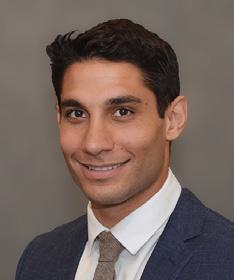
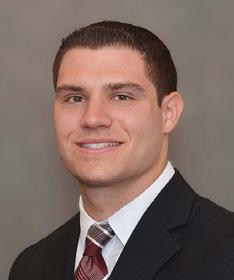
Dr. Derakhshan is equally known for the humility and diligence he brings to the laboratory and clinic. Over the course of his residency training, he earned several prestigious research grants, including the Leslie Bernstein Resident Research CORE Grant and travel grants to the 2019 Triological Society Sections Meeting and 2019 Annual Meeting of the American Association of Facial Plastic and Reconstructive Surgery. His research culminated in a FOCUS research project on the regeneration of axons in nerve grafts. He is currently a facial plastic and reconstructive surgery fellow at Johns Hopkins University.
Suresh Mohan, MD, joined the residency program as a seven-year research resident. Known for his earnest commitment to learning and enthusiasm for mentorship, Dr. Mohan dedicated his research to nerve repair and earned the Leslie Bernstein Resident Research CORE Grant. By the time he completed his training, he would also earn the Ruth L. Kirschstein National Research Service Award Individual Postdoctoral Fellowship (F32) from the National Institute of Dental and Craniofacial Research, the Combined Pilot Research Grant from the Plastic Surgery Foundation/ American Society for Peripheral Nerve and
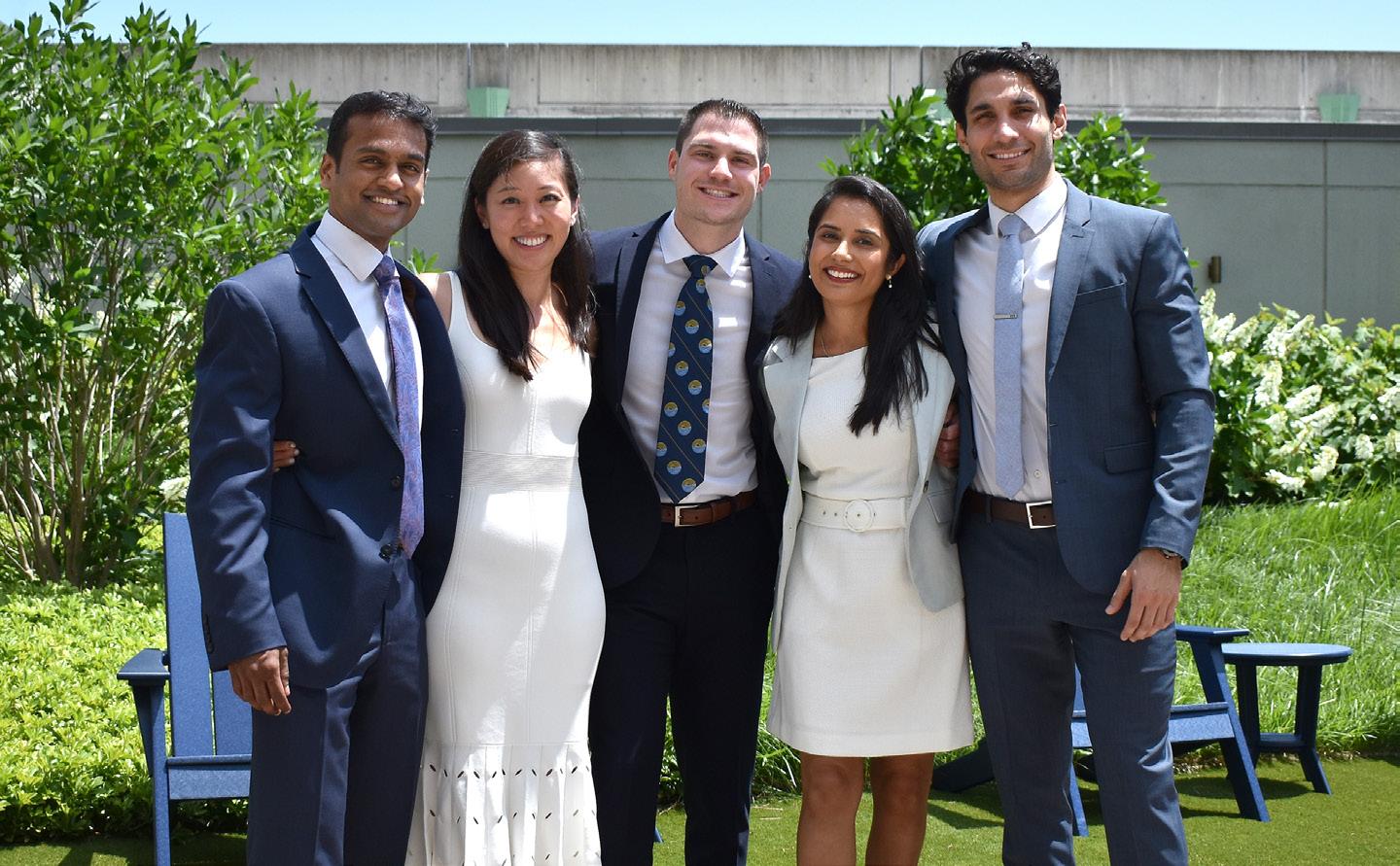


the Pediatric Loan Repayment Program Grant from the National Institutes of Health. Dr. Mohan is now at the University of California, San Francisco, pursuing a fellowship in facial plastic and reconstructive surgery.
With a passion for global surgical care, Krupa Patel, MD, is known for her deeply caring personality and intellectual savvy. Alongside faculty mentor David A. Shaye, MD, MPH, FACS, she completed a cleft surgical mission trip in Zimbabwe and developed a passion for pediatric otolaryngological care. Throughout her residency training, she served on numerous leadership committees, including the Graduate Medical Education Committee and Steering Committee for Quality. Her research spanned numerous topics but primarily focused on implementing interdisciplinary care and improving outcomes for pediatric patients with complex conditions. Dr. Patel is currently a pediatric otolaryngology fellow at Lurie Children’s Hospital of Chicago, Northwestern University.
Tiffany V. Wang, MD, never forgets her lighthearted sense of humor at work. Her sincerity and upbeat demeanor made her an easy choice to serve on the Program Evaluation Committee and Curriculum Committee at Mass Eye and Ear, while her quick wit and tenacious spirit led Harvard Otolaryngology to an Academic Bowl victory at the 2021 American Academy of Otolaryngology–Head and Neck Surgery Annual Meeting. Early in her residency training, Dr. Wang developed a keen interest in airway and voice disorders, which inspired her to pursue research on the integration of technology for diagnosing and treating laryngeal conditions. Her FOCUS research project detailed the application of a computer vision tool for automated glottic tracking in vocal fold paralysis patients. She is now at Emory University pursuing a fellowship in laryngology.

21 HARVARD Otolaryngology
From left to right: Graduating Mass Eye and Ear residents Suresh Mohan, MD; Tiffany V. Wang, MD; Eric R. Barbarite, MD; Krupa Patel, MD; and Adeeb Derakhshan, MD.
From
FAREWELL CLASS OF 2022
Clinical Fellows, Pediatric Otolaryngology, Boston Children’s Hospital
Fellowship Director: Gi Soo Lee, MD, EdM Lilun Li, MD
Future Plans: Assistant Professor, Department of Otolaryngology–Head and Neck Surgery, Division of Pediatric Otolaryngology, Rutgers Robert Wood Johnson Medical School
Brian Manzi, MD
Future Plans: Assistant Professor, Department of Otolaryngology–Head and Neck Surgery at New Jersey Medical School, Rutgers Biomedical and Health Sciences
Joseph Peterson, MD
Future Plans: Assistant Professor, Otolaryngology–Head and Neck Surgery, Loma Linda University Health
Clinical Fellows, Mass Eye and Ear
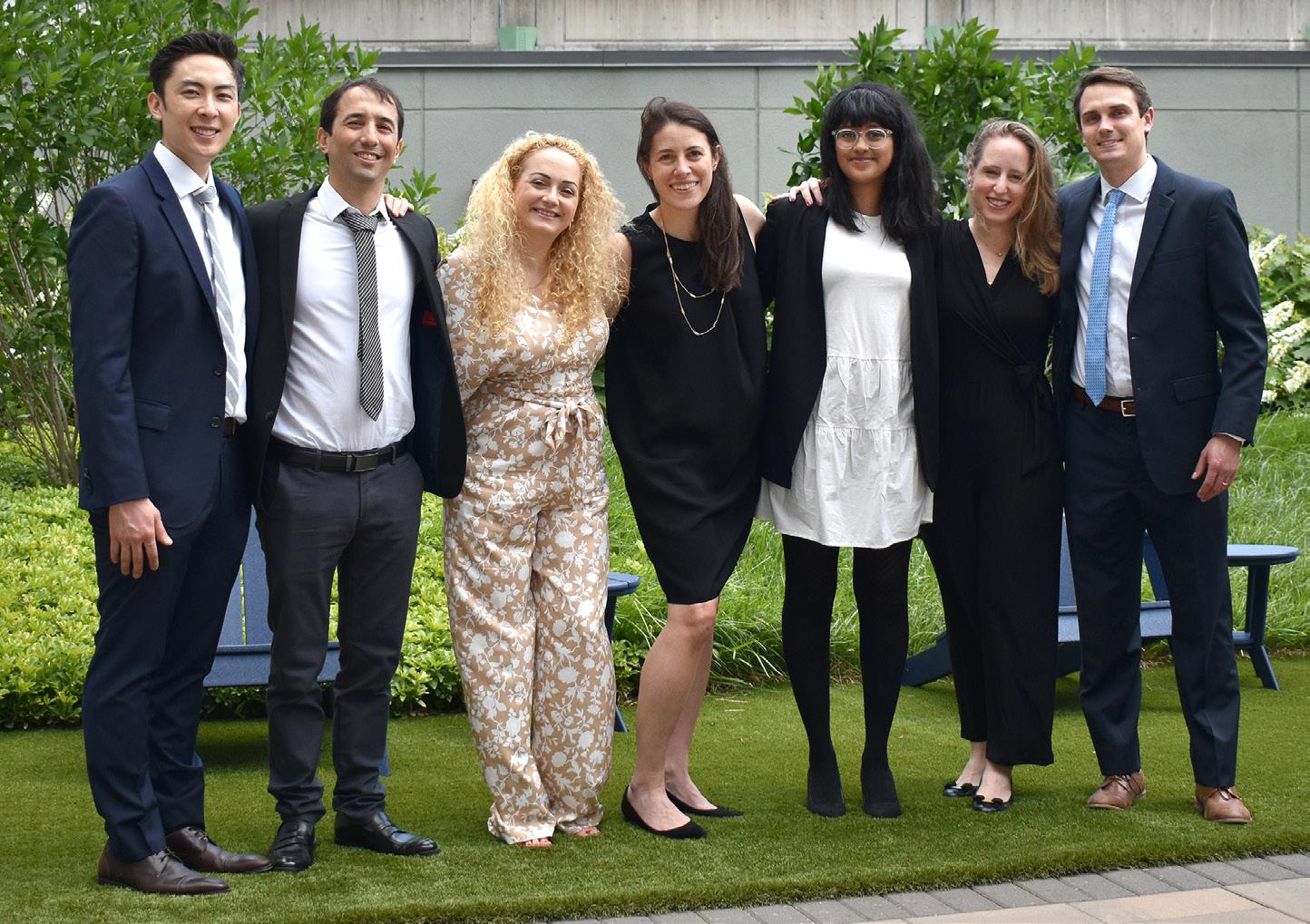
John P. Flynn, MD
Facial Plastic and Reconstructive Surgery
Fellowship Director: Tessa A. Hadlock, MD
Future Plans: Faculty Member, University of Kansas
Tal Kaufman Goldberg, MD
Facial Plastic and Reconstructive Surgery Fellowship Director: Tessa A. Hadlock, MD
Future Plans: Faculty Member, Tel Aviv Hospital, Israel
Amanda Silver Karcioglu, MD
Thyroid and Parathyroid Surgery
Fellowship Director: Gregory W. Randolph, MD, FACS, FACE
Future Plans: Attending Surgeon, NorthShore University HealthSystem
Orna Katz Kadosh, MD
Pediatric Otolaryngology
Fellowship Director: Michael S. Cohen, MD
Future Plans: Pediatric Otolaryngologist, Dana-Dwek Children’s Hospital, Sackler School of Medicine, Tel Aviv University, Israel
Barak Ringel, MD
Rhinology
Fellowship Directors: Ralph B. Metson, MD; Stacey T. Gray, MD; Eric H. Holbrook, MD

Future Plans: Attending Physician, Mass Eye and Ear, Instructor in Otolaryngology–Head and Neck Surgery, Harvard Medical School
Shanmugappiriya Ummaiyal Sivarajah, MD, MPH, FRCSC
Head and Neck Oncology/ Microvascular Surgery Fellowship Directors: Daniel G. Deschler, MD, FACS; Jeremy D. Richmon, MD
Future Plans: Second Fellowship in Head and Neck Oncology and Microvascular Reconstruction with Terry Day, MD, and Head and Neck Specialists in Charleston, SC
Yohan Song, MD
Neurotology
Fellowship Director: Daniel J. Lee, MD, FACS
Future Plans: Otology/Neurotology Practice, Atlanta Otology
22 HARVARD Otolaryngology
s
left to right: Graduating Mass Eye and Ear fellows Yohan Song, MD; Barak Ringel, MD; Orna Katz Kadosh, MD; Amanda Silver Karcioglu, MD; Shanmugappiriya Ummaiyal Sivarajah, MD, MPH, FRCSC; Tal Kaufman Goldberg, MD; and John P. Flynn, MD.
From left to right: Graduating fellows from Boston Children’s Hospital Brian Manzi, MD; Lilun Li, MD; and Joseph Peterson, MD.
s NEW TRAINEES
Harvard Combined Residency Program in Otolaryngology–Head and Neck Surgery
Originally from NhaTrang, Vietnam, Hoang Bui-Nguyen, MD, PhD, studied biology at Cornell University. There, he graduated magna cum laude and was inducted into the Phi Beta Kappa Honor Society. He subsequently matriculated at the Perelman School of Medicine at the University of Pennsylvania, where he was the inaugural scholar of the Jeffrey Myers Family Fund for Surgical Oncology and earned his MD and PhD. Research by Dr. Bui-Nguyen has been published in Nature, Cell and Science, and his thesis on epigenetics, immunology and computational biology was awarded the Saul Winegrad Award for Outstanding Dissertation and the Richard K. Root Prize for Infectious Disease Research. His primary interests include genomics, immunology, computational models, machine learning and global surgery.



Lillian (Lily) Dattilo, MD, grew up in Pittsburgh, PA, and graduated magna cum laude from Princeton University with a degree in molecular biology and a minor in health policy. There, she completed a thesis on bacterial genetics and was inducted into the Phi Beta Kappa Honor Society. Prior to medical school, she performed health policy research at the Center for Strategic and International Studies in Washington, D.C. Dr. Dattilo earned her medical degree from Harvard Medical School, where she conducted research on health care utilization, drug pricing and clinical outcomes under the guidance of mentors at the Broad Institute, Brigham and Women’s Hospital and Mass Eye and Ear. Her current interests include clinical outcomes and health systems research.
Geethanjeli (Geetha) Mahendran, MD, MPH, of Thompson, CT, graduated summa cum laude from Tufts University with a degree in biochemistry. She earned her medical degree from the Emory University

School of Medicine and a Master of Public Health with a concentration in behavioral, social and health education from the Rollins School of Public Health. At Emory University, Dr. Mahendran served numerous leadership positions, a few of which included ENT Interest Group President, American Medical Women’s Association Vice President and Director of Mentorship for the Association of Women’s Surgeons. Her research has focused on disparities in adult and pediatric cochlear implantation as well as the role of mentorship and sponsorship for women in the surgical field.
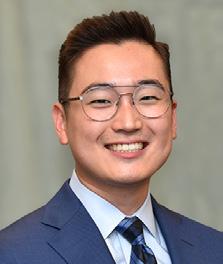
Elizabeth (Liz) Noyes, MD, grew up in Harvard, MA, and graduated summa cum laude from the University of Massachusetts, Amherst, with a degree in neuroscience and anthropology. Following her undergraduate studies, she served as a researcher at the Center for Global Health Delivery-Dubai at Harvard Medical School (HMS). Dr. Noyes subsequently earned her medical degree at HMS, where she researched health equity among head and neck cancer patients alongside HMS faculty Daniel G. Deschler, MD, FACS; Gregory W. Randolph, MD, FACS, FACE; Regan W. Bergmark, MD; and Scharukh M. Jalisi, MD, FACS. Dr. Noyes’ interests include mentorship, high-quality care for underserved patients, health equity research and community-based global health care delivery.
Originally from Incheon, South Korea, Edward Sim, MD, graduated summa cum laude from Case Western Reserve University, where he studied biochemistry and was inducted into the Phi Beta Kappa Honor Society. Before matriculating at the University of Pittsburgh School of Medicine, he spent a year studying stress adaptation mechanisms of pancreatic tumors with Elda Grabocka, PhD, at the Thomas Jefferson University School of Medicine. During medical school, Dr. Sim was a Hillman Medical Student Fellow who studied the impact
of T-cell dysfunction in the aging head and neck cancer population alongside Robert L. Ferris, MD, PhD. He also led the development of a professional enrichment course in otolaryngology for preclinical medical students. His primary research interests include cancer immunology, head and neck surgical outcomes, medical education and surgical simulation.
New Clinical Fellows
Mass Eye and Ear
[ 1 ] Dara Adams, MD Rhinology



[ 2 ] Douglas Chieffe, MD Pediatric Otolaryngology

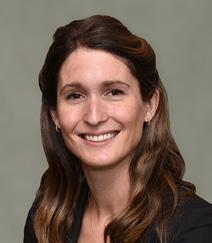

[ 3 ] Nicole Jiam, MD Neurotology

[ 4 ] Natalia Kyriazidis, MD Thyroid and Parathyroid; Endocrine

[ 5 ] Charles Meyer, MD Head and Neck
[ 6 ] Thad Vickery, MD Rhinology

[ 7 ] Christina Yver, MD Facial Plastic
Boston Children’s Hospital
[ 8 ] Gabrielle French, MD
[ 9 ] Kenneth Kennedy, MD
[ 10 ] Farrukh Virani, MD

23 HARVARD Otolaryngology
Meet our PGY-1 Residents 8 9 10 1 2 3 4 5 6 7
OHNS Residency Program at Beth Israel Deaconess Medical Center/ Harvard Medical School Hosts Inaugural End-of-Year Celebration
On Friday, June 24, the Otolaryngology–Head and Neck Surgery (OHNS) Residency Program at Beth Israel Deaconess Medical Center/Harvard Medical School honored its graduating fellows and celebrated its newest class of trainees during its inaugural end-of-year celebration.
The celebration was led by Scharukh M. Jalisi, MD, FACS, Chief of OHNS and OHNS Residency Director at the Beth Israel Deaconess Medical Center; David S. Caradonna, MD, DMD, Associate OHNS Residency Director at the Beth Israel Deaconess Medical Center; and James G. Naples, MD, Associate OHNS Residency Director at the Beth Israel Deaconess Medical Center. Mark A. Varvares, MD, FACS, Chair of OHNS at Harvard Medical School and Chief of OHNS at Mass Eye and Ear and Massachusetts General Hospital, served as the event’s guest-of-honor.
Two graduating fellows were honored at the event: Hamdan Pasha, MD, (left) the program’s Head and Neck Surgical Oncology and Microvascular Reconstruction Fellow, and Wyatt Rice-Narusch, MD, (right) the program’s OHNS Fellow. Dr. Pasha is an attending head and neck surgical oncologist and microvascular surgeon in the Department of Otolaryngology at the Aga Khan University Hospital in Karachi, Pakistan. He will also serve as an Assistant Professor pending clearance from his university. Dr. Rice-Narusch is pursuing a general surgery position at the University of Chicago.
Residents
Alexa Kacin, MD, grew up in Pittsburgh, PA, and graduated summa cum laude from Northeastern University with a degree in health science and a minor in psychology. During her time at Northeastern, Dr. Kacin worked as an otolaryngology nursing assistant and traveled to Tugela Ferry, South Africa, to conduct research on tuberculosis and human immunodeficiency virus outcomes. She matriculated at the University of Pittsburgh School of Medicine, where she authored a manuscript on the impact of COVID-19 precautions on tympanostomy tube placement in children with cleft palate. Dr. Kacin has run two Boston Marathons for Operation Airway and has run the Chicago Marathon as a member of Team Empower for Smile Train.

Originally from Hendersonville, TN, Regan Manayan, MD, attended Tulane University, where he earned his degree in Italian and graduated summa cum laude as a member of the Phi Beta Kappa Honor Society. At Tulane, he conducted research in the lab of Bruce A. Bunnell, PhD, studying the use of adipose-derived stem cells in the treatment of neurodegenerative diseases. Dr. Manayan subsequently matriculated at Tufts University School of Medicine, where he conducted clinical research under the mentorship of Andrew R. Scott, MD. His research focused on the improvement of patient outcomes and the use of smartphones for pediatric hearing screenings. His current interests include neurotology, patient outcomes and the utilization of technology in clinical decision making.

Fellows
[ 1 ] Anton Warshavsky, MD


Head and Neck Surgical Oncology and Microvascular Reconstruction Fellow


[ 2 ] Mohamed Aboueisha, MD

Otolaryngology–Head and Neck Surgery Fellow
1 2
24 HARVARD Otolaryngology
Please join us in welcoming the newest class of trainees to the OHNS Residency Program at Beth Israel Deaconess Medical Center/Harvard Medical School
ALUMNI GIVING SOCIETY

The Alumni Giving Society of the Department of Otolaryngology–Head and Neck Surgery at Harvard Medical School
The Department of Otolaryngology–Head and Neck Surgery at Mass Eye and Ear/ Harvard Medical School established the Alumni Giving Society in 2015 to recognize faculty and alumni who make gifts of $1,000 or more during the fiscal year (October 1–September 30). Participation is a way to stay connected and to help deliver the finest teaching experience for today’s otolaryngology trainees.

Our alumni know from firsthand experience that support of the vital work of our students and faculty in the Department of Otolaryngology–Head and Neck Surgery helps drive continued achievement across all areas of education, research and patient care. In the 2022 fiscal year, we had 39 members who we thanked for their generosity and partnership. Their collective support helped us achieve our department goals and institutional mission.
If you are not a member, please consider joining your colleagues today by making a gift with the enclosed envelope. As a member, you may designate your gift in the way that is most meaningful to you.

To learn more, please contact Julie Dutcher in the Development Office at 617-573-3350
sCurrent Alumni Giving Society members for fiscal year 2022, from October 1, 2021, to September 30, 2022, are listed below. With your gift of $1,000 or more, you will be included in the 2023 Alumni Giving Society. FRIEND

VISIONARY
Gifts of $10,000 to $24,999
Michael S. Cohen, MD
INNOVATOR
Gifts of $5,000 to $9,999
Neil Bhattacharyya, MD, FACS
Nathan Jowett, MD, FRCSC
Leila Mankarious, MD
PIONEER
Gifts of $2,500 to $4,999
Catherine Banks, MD
Nicolas Y. BuSaba, MD, FACS
Richard E. Gliklich, MD
John B. Lazor, MD, MBA, FACS
Kasey K. Li, MD, DDS
David E. Nash, MD
H. Gregory Ota, MD
Gregory W. Randolph, MD, FACS, FACE
John J. Rosowski, PhD
Mark F. Rounds, MD
Jonathan Y. Ting, MD, MS, MBA
Mark A. Varvares, MD, FACS
William M. White, MD
Gifts of $1,000 to $2,499
Megan E. Abbott, MD
Barry J. Benjamin, MD
Ruth Anne Eatock, PhD
Bruce Feldman, MD
Robert A. Gryboski, MD
Paul E. Hammerschlag, MD, FACS
Earl Harley, Jr., MD
Martin L. Hopp, MD, PhD
Nelson Yuan-Sheng Kiang, PhD
William McClerkin, MD
Cliff A. Megerian, MD, FACS
Ralph B. Metson, MD
Eugene N. Myers, MD, FACS, FRCS
Didier Peron, MD
Adrian J. Priesol, MD
Sunil Puria, PhD
Edward J. Reardon, MD
Michael B. Rho, MD, FACS
Jeremy D. Richmon, MD
George A. Scangas, MD
Theodoros N. Teknos, MD
Isaac Wasserman, MD
Department of Otolaryngolog y Head and Neck Surger y
25 HARVARD Otolaryngology
ALUMNI PROFILE
John Ansley, MD, ’99
A match made over lunch.
John Ansley, MD, was a fourth-year medical student when he discovered his future vocation. It was the fall of 1993, he remembered, and his fascination with head and neck anatomy at the Weill Cornell Medical School had culminated into a deep appreciation for the sophisticated procedures privy to the field of otolaryngology.
To Dr. Ansley, now a comprehensive ear, nose and throat (ENT) surgeon at Charleston ENT & Allergy, enrolling in an otolaryngology training program was no longer a question of “if,” but rather of “when” and “where?” And, with dozens of residency programs to choose from, finding the right fit was his top priority, just as it had been his entire life. After all, he had traveled hundreds of miles from his home in Charleston, SC, to attend Brown University before medical school. It only made sense to search near and far for his next endeavor.
But not too far, thankfully. Plenty of hints would guide his way, the most profound of which manifested that fall in the lunchroom at Mass Eye and Ear.
Dr. Ansley had arrived at the hospital for the first of his fourthyear clinical rotations and—within his first few days in Boston— had befriended a young graduate of the Harvard Otolaryngology Residency Program: Gregory W. Randolph, MD, FACS, FACE. Their conversations left a lasting impression on Dr. Ansley, who would cherish every piece of advice he received from mentors over the course of his rotation.
To him, these were the consummate professionals who he would try to model his career after. Today, he points to their advice as the blueprint for his success as both an ENT surgeon and researcher.
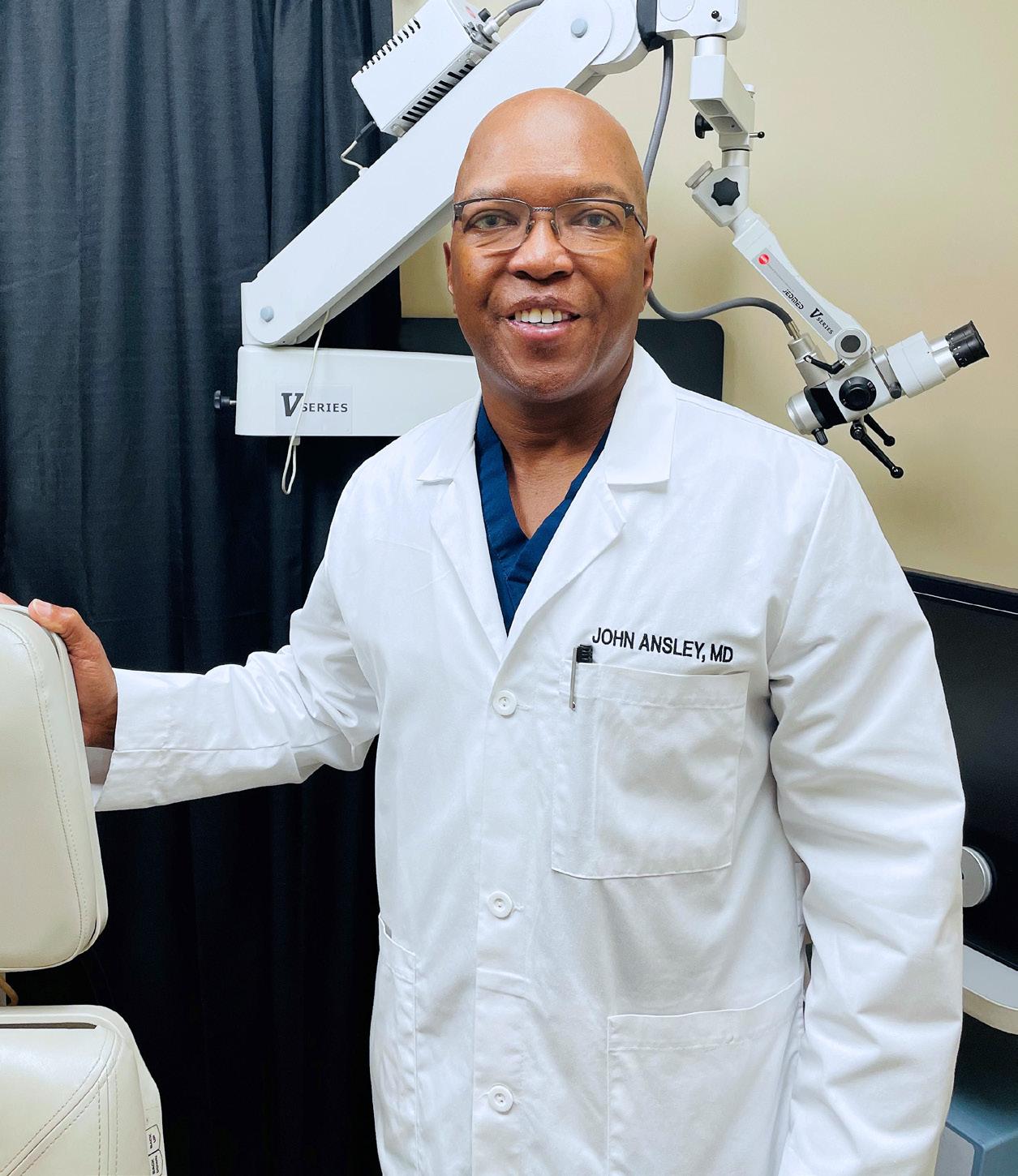
“Dr. Randolph was practically inventing the field of otolaryngological endocrine surgery at the time, and here I was, just a regular medical student,” said Dr. Ansley. “You don’t get too many opportunities to spend time with attendings, let alone an attending who was building a practice and fellowship from scratch. I needed to soak up every ounce of insight I could get.”
By the time he left Boston, Dr. Ansley could feel a true sense of compassion and trust among colleagues and Harvard faculty at the hospital. He had felt comfortable approaching anyone— no matter their pedigree—and the Harvard Otolaryngology Residency Program would soon supersede 15 other programs as his listed preference for a future training program.
In 1995, Dr. Ansley officially matched into the Harvard training program. While meeting with Dr. Randolph every now-and-then, he met new mentors who widened his understanding of what it meant to live out the profession. Michael Cunningham, MD, then the Division Chief of Pediatric Otolaryngology at Mass Eye
26 HARVARD Otolaryngology s
“Mass Eye and Ear made me into a lifelong scientist. To this day, I catch myself examining new patients and reading journals through the same critical lens passed down to me.”
Photos provided courtesy of John Ansley, MD.
and Ear, was one such mentor who piqued Dr. Ansley’s interest. According to Dr. Ansley, his mentor would always write, “Attention to detail,” on a sheet of paper and leave it for his trainees to see during clinical rounds.
“It was such a simple reminder, but it’s one I’ve tried to live my life by ever since,” he said. “Doing the small things for our patients—as we might do for our friends and family—is what would make us great, not good, doctors.”
Dr. Ansley kept the beloved mantra front of mind long after completing his residency training. In 2000, he followed in Dr. Cunningham’s footsteps by completing a pediatric fellowship at the University of Chicago. He soon thereafter returned to South Carolina to start a family and open his own comprehensive adult and pediatric ENT practice.
Despite his many obligations, he continued to hone his attention to detail by partnering with numerous pharmaceutical companies on a variety of clinical drug trials. His expertise helped bring to market several antibiotics for the ear, and he continues to present on a broad range of ear, nose and throat research findings at national conferences.
“Mass Eye and Ear made me into a lifelong scientist,” Dr. Ansley said. “To this day, I catch myself examining new patients and reading journals through the same critical lens passed down to me.”
Above all else, Dr. Ansley strives to pay forward the mentorship offered to him years ago. His work serving as an investigator in clinical drug trials, he said, gives him a chance to set an example for members of the Black community. According to Dr. Ansley, underrepresented people of color can feel dissuaded from participating in clinical drug trials when few of the investigators share a similar background or appearance. A lack of diversity in laboratories can give those underrepresented less of a reason to trust an experiment.
Since the effects of a drug might manifest in different ways for people of different backgrounds, a lack of participation among underrepresented groups might produce incomplete findings. Dr. Ansley hopes to change this narrative by recruiting as many investigators of color as possible.
[ 1 ] From left to right: John Ansley, MD, next to his son, Justin, and his wife, Simone.

[ 2 ] Dr. Ansley (left) with Glenda Jamison, RN, at Charleston ENT & Allergy.
“Remember: Sometimes it’s the smallest details—those details we tend to overlook when we get too caught up in our work— that make the heaviest impact,” he said. “If I can provide people from these groups with a face that looks like theirs, a voice that sounds like theirs and a background that matches their own, then I believe I’m playing a large role in moving our field forward.” n
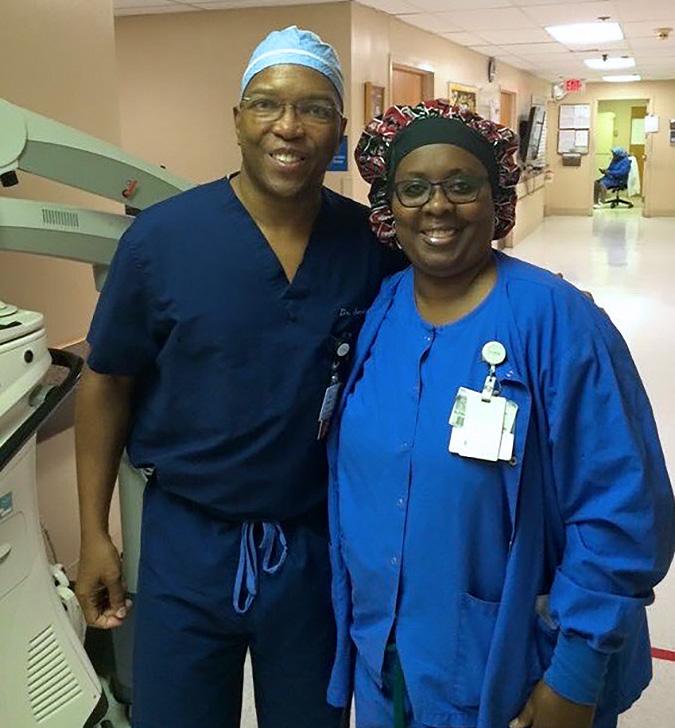
27 HARVARD Otolaryngology
1 2
HIGHLIGHTS s
New Faculty
Introducing the newest clinicians, clinician-scientists, researchers and educators in the Department of Otolaryngology–Head and Neck Surgery.
Robin Pappal, MD, is a comprehensive ear, nose and throat surgeon at Mass Eye and Ear, Weymouth and Duxbury. Dr. Pappal graduated from Albany Medical College and completed her residency training in otolaryngology–head and neck surgery at the University of Kentucky. During her residency training, she conducted research on airway conditions and statewide health care disparities. Her clinical focus is on the full spectrum of general adult and pediatric ear, nose and throat care with particular interests in otology, rhinology and access to equitable health care.
Matthew Russell, MD, is a board-certified comprehensive ear, nose and throat surgeon at Mass Eye and Ear, Stoneham. Upon graduating from the Boston University School of Medicine, he completed his general surgery internship and residency training in otolaryngology–head and neck surgery at the University of California, San Francisco (UCSF). He subsequently served on the UCSF faculty for more than a decade. His interests at UCSF included complicated head and neck infections, sinus surgery and airway management. At Mass Eye and Ear, his primary focus will be on comprehensive otolaryngology in the community.
Barak Ringel, MD, is an ear, nose and throat surgeon at Mass Eye and Ear who earned his medical degree from Tel Aviv University and completed his residency training at Tel Aviv Sourasky Medical Center. He is dual-fellowship trained, having completed a head and neck surgery fellowship at Lenox Hill Hospital, New York, and a rhinology and skull base surgery fellowship at Mass Eye and Ear. Dr. Ringel also serves as a researcher; his research focus includes advanced surgical methods and novel medical devices.
Recent Promotions
[ 1 ] Christopher D. Brook, MD, Assistant Professor of Otolaryngology–Head and Neck Surgery

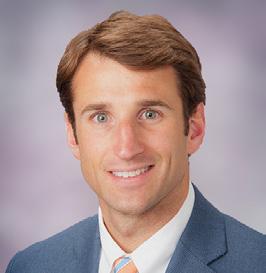

[ 2 ] Allen L. Feng, MD, Assistant Professor of Otolaryngology–Head and Neck Surgery




[ 3 ] Phillip A. Huyett, MD, Assistant Professor of Otolaryngology–Head and Neck Surgery
[ 4 ] Ayesha Naz Khalid, MD, MBA, Assistant Professor of Otolaryngology–Head and Neck Surgery
[ 5 ] Eleni M. Rettig, MD, Assistant Professor of Otolaryngology–Head and Neck Surgery

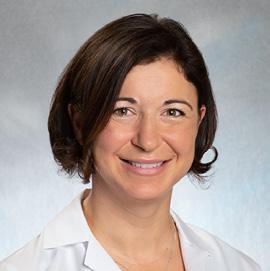

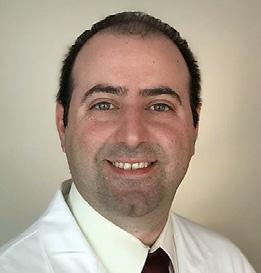
[ 6 ] Caitlin O’Connell-Rodwell, MD, Instructor in Otolaryngology–Head and Neck Surgery
[ 7 ] George A. Scangas, MD, Assistant Professor of Otolaryngology–Head and Neck Surgery
Awards, Grants and Honors

Dunia Abdul-Aziz, MD, was named the recipient of the 2022 Seth Robbins Mass General Neuroscience Transformative Scholar in Tinnitus Research Award.
The award, which supports junior investigators conducting laboratory or clinical research on tinnitus, will support Dr. Abdul-Aziz’s research studying epigenetic pathways as they relate to hearing loss and tinnitus.
For the first time since the COVID-19 pandemic, the Alumni Association of the Harvard Medical School Department of Otolaryngology–Head and Neck Surgery Training Programs welcomed faculty and
1 2
current and former trainees to its Alumni Reception at the 2022 Annual Meeting of the American Academy of Otolaryngology–Head and Neck Surgery. Dozens arrived for the reception, which took place at the Stratus Rooftop at Hotel Monaco in Philadelphia, PA.
28 HARVARD Otolaryngology
News from every corner of the Department of Otolaryngology–Head and Neck Surgery at Harvard Medical School.
3 4 5 6 7
Current and former trainees and faculty pose for a photo alongside colleagues at the 2022 Annual Meeting of the American Academy of Otolaryngology–Head and Neck Surgery.
The 2022 AI-Cures Conference, a conference co-hosted by the Massachusetts Institute of Technology and Mass General Brigham that features ongoing, collaborative projects in clinical artificial intelligence (AI), highlighted research presented by Ryan Bartholomew, MD, MTR; Krish Suresh, MD; Matthew G. Crowson, MD; and D. Bradley Welling, MD, PhD, FACS. Together, the researchers presented a machine learning system concept for detecting and measuring vestibular schwannoma tumor volume.
Zheng-Yi Chen, DPhil, was named a Principal Investigator (PI) of a $4 million, multi-PI R01 grant from the National Institutes of Health to develop geneediting treatments for different forms of Usher syndrome. Alongside Karl Koehler, PhD, and Xue Zhong Liu, MD, PhD, FACS, the lead PI of the grant, Dr. Chen will test the ability of several gene-editing techniques to fix mutations in genes responsible for different types of Usher syndrome. Dr. Chen has filed a patent application for the technology used in one of the techniques, referred to as exon skipping.
Amanda Dilger, MD, spearheaded an initiative to make the 2022 Annual Meeting of the American Academy of Otolaryngology–Head and Neck Surgery carbon neutral. Working with leadership from the Harvard Department of Otolaryngology–Head and Neck Surgery, she helped establish a partnership with Cool Effect, a non-profit carbon offset provider, and encouraged those who attended the conference to make a small donation to offset travel and hotel-related greenhouse gas emissions.
Gillian R. Diercks, MD, MPH, and Eleni M. Rettig, MD, were named recipients of 2022 Eleanor and Miles Shore Development Awards, which support the academic success of junior faculty who are balancing early careers with significant responsibilities. Dr. Diercks was awarded the 2022 Mass Eye and Ear Fellowship Award, and Dr. Rettig was awarded the Brigham and Women’s Hospital Department of Surgery Junior Fellowship Award in honor of Robert T. Osteen, MD.
In October 2022, Michael H. Fattal, MD, was initiated as a fellow into the American College of Surgeons.
Daniel Faden, MD, FACS, was awarded a R21 grant from the National Institutes of Health to examine whether a non-invasive “liquid biopsy” can detect head and neck cancers before they become symptomatic. The grant, which is worth $464,000, will fund a study that evaluates the application of a liquid biopsy to various cancer samples collected years prior to diagnosis.

Ernest D. Gomez, MD, MTR, earned second place in the annual American Academy of Otolaryngology–Head and Neck Surgery Sim Tank Competition for his project entitled “Development of Low-Cost Virtual Reality Teaching Videos for Head and Neck Surgical Anatomy.”

New Leadership
Daniel G. Deschler, MD, FACS, has been named interim Dean of Leverett House at Harvard University.

Ernest D. Gomez, MD, MTR, has been appointed Chair of the Committee for Diversity, Equity and Inclusion for the Beth Israel Deaconess Medical Center Department of Surgery, as well as Co-Director of Surgical Innovation and External Programming for the Shapiro Simulation and Skills Center.

Robin W. Lindsay, MD, has been named Editor-in-Chief of ENTtoday
James G. Naples, MD, has been selected to the editorial board of Otolaryngology–Head and Neck Surgery as a star reviewer.
Reza Rahbar, MD, DMD, has been elected President of the American Society of Pediatric Otolaryngology.
Kristina Simonyan, MD, PhD, Dr med, has joined the Advisory Board of the Voice and Speech Foundation.
At the spring meeting for the American Society of Pediatric Otolaryngology, Orna Katz Kadosh, MD, won the Fellow Award and finished second for the William Potsic Basic Science Award, both for her presentation on balloon dilation in rabbit models with chronic subglottic stenosis.
Phoebe Yu, MD, won the first-place Charles Ferguson Clinical Research Award for her presentation on the stimulation of the upper airway of adolescents with Down syndrome and obstructive sleep apnea.
Elliott D. Kozin, MD, was named the recipient of the Norman Knight Leadership Development Award at Mass Eye and Ear’s Spring Meeting of the Trustees and Medical Staff. The award is endowed by Norman Knight, a self-made broadcast pioneer and media mogul who has been a passionate champion of Mass Eye and Ear for more than 25 years.
Mark A. Varvares, MD, FACS, (right) presents Elliott D. Kozin, MD, (left) with the Norman Knight Leadership Development Award.
In June 2022, Daniel J. Lee, MD, FACS, served as the 13th Annual Lawrence Savetsky, MD, Lecturer at the Columbia and Weill Cornell Departments of Otolaryngology Graduation in New York City, NY.

Stéphane F. Maison, PhD, CCC-A, was invited to guest lecture at the French Institut de l’Audition–Pasteur Institute, a center committed to basic and translational neuroscience research in the field of hearing.
He also served as a keynote speaker at the Annual Congress of Audiologists in Laval, Quebec, Canada.
29 HARVARD Otolaryngology [ continued p. 30 ]
HIGHLIGHTS s

Mass Eye and Ear installed the newest version of the da Vinci Single Port Robot in its operating rooms. The robot provides head and neck surgeons with an instrument optimal for navigating tight working spaces, such as the oral cavity and pharynx, during transoral surgery.


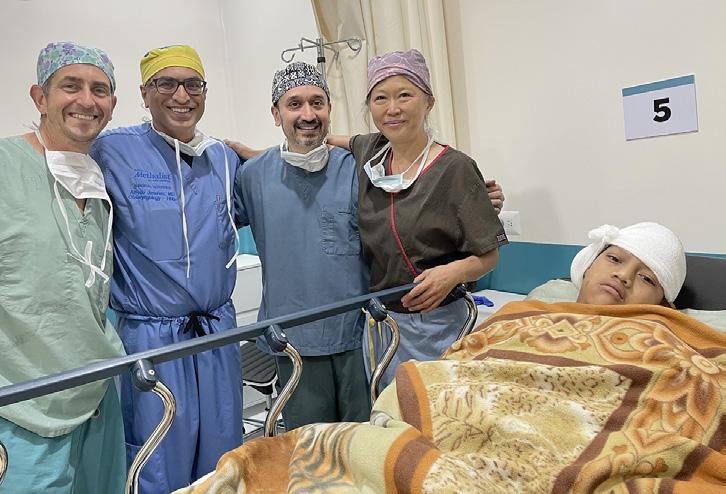
Speech and Hearing Bioscience and Technology Program 30th Anniversary Symposium

The Speech and Hearing Bioscience and Technology (SHBT) Program at Harvard University celebrated its 30th anniversary in September 2022 with a symposium featuring current and former members of the program. The event, which was organized by Gwenaelle S. Géléoc, PhD, Director of the SHBT, took place inside the Meltzer Auditorium at Mass Eye and Ear and featured a keynote address from Adrian KC Lee, ScD, who is the Professor and Chair of Speech and Hearing Services at the University of Washington, Seattle, and a former program alumnus.
Ralph Metson, MD, who began his year of service as President of the Triological Society in May 2022, is currently planning the 2023 Triological Combined Sections meeting in Coronado, CA, and the 2023 Combined Otolaryngology Spring Meetings (COSM) in Boston, MA. Scheduled for May 2023, COSM will celebrate the 125th anniversary of the Triological Society and launch a year-long celebration of Mass Eye and Ear’s 200th anniversary.
The National Institutes of Health awarded Daniel B. Polley, PhD, a five-year, $3.48 million R01 grant to understand how clusters of acetycholine-releasing neurons at the base of the mammalian forebrain can shape the perception of sound and enable plasticity in sound processing centers of the brain. Anne E. Takesian, PhD, will serve as a co-investigator of the grant.
Sunil Puria, PhD, chaired the 2022 International Hearing Aid Research Conference held in Lake Tahoe, CA. He was also named co-investigator of a Mass General Brigham Innovation Discovery Grant. The grant is worth $100,000 and is regularly awarded to scientists leading research to uncover potential patient health and health care delivery breakthroughs.
More than 60 faculty from 19 departments across Harvard, the Massachusetts Institute of Technology, Boston University and four Harvard-affiliate hospitals have participated in the program since its inception in 1992, and more than 150 students have graduated with a PhD. Those who have graduated have consistently assumed leadership positions in academia, industry, medical policy, law and scientific publishing.
Medical Mission Trip to Guatemala
In June 2022, former trainees of the Harvard Combined Residency Program in Otolaryngology–Head and Neck Surgery returned from their annual medical mission trip to Antigua, Guatemala, where they treated children with cleft lip and palate and congenital ear deformities. Former trainees have embarked on the medical trip for the past 13 years, and hundreds of children have received care in that span.
Two mission trips to Guatemala are currently planned for 2023.
Pictured from left to right: Former trainees Noah Siegel, MD, ’00; Ritvik Mehta, MD, ’06; Daniel Alam, MD, ’01; Jennifer Kim, MD, ’00.
30 HARVARD Otolaryngology
Jeremy D. Richmon, MD, poses next to the new single port robot.
Gwenaelle S. Géléoc, PhD, at the symposium.
Gregory W. Randolph, MD, FACS, FACE, was inducted into the Academy of Master Surgeon Educators of the American College of Surgeons. He was officially inducted during a special ceremony held in Chicago, IL, in September 2022.
The Department of Defense (DoD) awarded Srinivas Vinod Saladi, PhD, a grant worth more than $723,000 to investigate a combined immunotherapy approach for treating malignant pleural mesothelioma (MPM). The DoD grant will fund Dr. Saladi’s attempts to better define the pathways responsible for MPM, as well as the genetic factors that prevent tumor suppressors from working against the malignancy.
Dr. Saladi also led a workshop at the inaugural Hippo Pathway Targeted Drug Development Summit in Boston, MA. The summit brought together world-
renowned experts in pharmaceuticals, biotech and academia who are committed to using a newly sought-after genetic pathway—the Hippo pathway—for the discovery, translation and development of safe and effective drugs to treat cancer.

Jo Shapiro, MD, taught several courses on conflict management and academic leadership at the Harvard T.H. Chan School of Public Health. She also led a wellbeing retreat for national leaders at the National Academies of Sciences, Engineering and Medicine in Washington, DC.
Representatives from Escuchar Sin Fronteras, a non-profit in Mexico committed to providing world-class care for children with severe to profound hearing loss regardless of their ability to afford care, met with A. Eliot Shearer, MD, PhD; Dennis S. Poe, MD, PhD, and colleagues at Boston Children’s Hospital to collaborate on the development of a cochlear implant program in Mexico City, Mexico. Eleven clinicians and team members from the non-profit travelled to Boston for
a four-day observation and learning session alongside Drs. Shearer and Poe.

Kristina Simonyan, MD, PhD, Dr med, was awarded a $3.3 million R01 grant from the National Institutes of Health to test her novel DystoniaNet deep learning platform in a clinical setting. Developed by Dr. Simonyan in 2020, DystoniaNet can detect dystonia from a MRI scan in a matter of seconds with nearperfect accuracy. Through her new grant, Dr. Simonyan will test the ability of the platform to diagnose isolated dystonia in patients at multiple institutions.
The American Association for Cancer Research awarded Roy Xiao, MD, MS, a $120,000 grant to investigate disparities in cancer care. Funding from the grant will help Dr. Xiao analyze new price transparency data in an effort to understand differences in payer-negotiated prices for cancer screenings and treatments.
James B. Snow, Jr., MD, (1932-2022), a graduate of the Harvard Medical School Otolaryngology–Head and Neck Surgery Residency Program, passed away in his West Grove, PA, home on May 28. Dr. Snow was a giant in the otolaryngology community. He published more than 150 articles in professional and scientific journals describing his work on the pathophysiology of the inner ear, the olfactory system and the treatment of head and neck cancer. In addition to his writings, he trained more than 80 specialists in his field and was highly active in organized medicine. A few of his most esteemed positions included serving as Director of the American Board of Otolaryngology, Regent of the American College of Surgeons, President of the American Bronchoesophagological Association, President of the American Laryngological Association and first Director of the National Institute on Deafness and Other Communication Disorders of the National Institutes of Health.
Aaron R. Thornton, PhD, CCC-SLP/A, (1943-2022), former Director of Audiology at Mass Eye and Ear, passed away in Des Moines, IA. Dr. Thornton was the first known audiologist with a PhD at Mass Eye and Ear. He was recruited in 1979 to launch the hospital’s Auditory Evoked Response Laboratory and, in his 20-year tenure in the Department of Audiology, introduced auditory evoked response (AER) hearing testing in babies, the identification of retro-cochlear hearing loss and the measurement of facial nerve damage. Hearing aid, cochlear implant and auditory rehabilitation services were also added to the department under his leadership. Renowned for his ingenuity and universally regarded as a visionary in his field, Dr. Thornton worked on several inventions that have shaped modern otolaryngological care and research.


31 HARVARD Otolaryngology
In
Memoriam
RESEARCH ADVANCES
The following are select research advances from the Harvard Medical School Department of Otolaryngology–Head and Neck Surgery.
Analysis of thyroid nodule detection modes and the rising incidence of thyroid cancer
In recent years, the incidence of thyroid cancer has increased in many countries. However, the mortality rate from the disease has not, which suggests improvements made to detecting and diagnosing small subclinical cancers worldwide.
To evaluate whether significant changes had occurred in the frequency of thyroid-referable symptoms, Gregory W. Randolph, MD, FACS, FACE, of Mass Eye and Ear, launched an international retrospective study that evaluated the pathology and medical records of 1,328 patients who underwent thyroid-directed surgery. The patient cohort had undergone surgery at 16 centers across four countries and, of the total number of surgeries, only 34 percent were operated on symptomatic patients. Findings from the study, which were published in JAMA Otolaryngology–Head & Neck Surgery, revealed that most thyroid cancers were found in patients who had no thyroid-referable symptoms.

The detection of asymptomatic thyroid nodules and cancers were found to be responsible for a substantial number of surgeries, which suggests clinicians should limit the overtreatment of such thyroid nodules and malignancies whenever appropriate.
M Sajisevi, L Caulley, A Eskander, et al. “Evaluating the Rising Incidence of Thyroid Cancer and Thyroid Nodule Detection Modes: A Multinational, Multi-Institutional Analysis.” JAMA Otolaryngology–Head & Neck Surgery. 2022; 148 (9): 811818. Doi: 10.1001/jamaoto.2022.1743
Assessing speech recognition development in children with cochlear implants using modified ranked-order speech scores
Children born with significant hearing loss who do not benefit from traditional hearing aids typically undergo surgery for a cochlear
implant (CI). The implant bypasses the functions of the outer, middle and inner ear and presents sound directly through the auditory nerve, which can allow patients to understand speech. However, due to a wide variety of tests used to assess speech perception, clinicians often struggle to properly characterize and compare the development of speech recognition in children with CIs.
In a retrospective study published in the American Journal of Audiology, Julie G. Arenberg, PhD, CCC-A, of Mass Eye and Ear, and colleagues conceptualized a new method of assessing the development of speech recognition in this pediatric cohort. The research team

began by modifying the Pediatric Ranked Order Speech Perception (PROSPER) scoring system to rank the different speech perception tests and performance levels used at Mass Eye and Ear. They then used the speech perception performance scores ordered with this methodology to determine how fast children improved their speech recognition and at what level their scores plateaued.
Findings demonstrated that, although the rate of improvement and final speech perception scores were highly variable, the age at which a child began using a CI was associated with faster development of speech recognition. Children who underwent the procedure at a younger age were more likely to develop speech recognition faster and plateau at a higher performance level. The researchers believe their approach could one day help clinicians better predict speech perception outcomes for children who wear the devices.
MK Arjmandi, BS Herrmann, B Caswell-Midwinter, EM Doney, JG Arenberg. “A Modified Pediatric Ranked Order Speech Perception Score to Assess Speech Recognition Development in Children With Cochlear Implants.” American Journal of Audiology. 2022; Vol 31: 613-632. Doi: 10.1044/2022_AJA-21-00212
In the past decade, the expression of specific genes—or epigenetic regulation— has emerged as a viable pathway for the development of head and neck cancer therapeutics. One signaling pathway in particular, the Hippo-YAP pathway, has garnered significant attention in recent years. The pathway is responsible for homeostasis and organ development, and alterations to the expression of several genes in the pathway are linked to approximately 50 percent of all head and neck cancers worldwide.

In a study published in Cell Reports, Srinivas Vinod Saladi, PhD, of Mass Eye and Ear, and a team of researchers uncovered a biomarker that, if identified early enough, could help treat a majority of head and neck cancers using specific epigenetic inhibitors. Upon analyzing the Cancer Gene Atlas and assessing drug sensitivity in specific cancers, Dr. Saladi and his colleagues discovered that cells with mutations in a gene called FAT1 on the Hippo pathway failed to block a cooperative mechanism between proteins YAP1 and BRD4, which resulted in out-of-control cell growth and a subsequent cancer progression.
Dr. Saladi suggests that, by identifying patients with a FAT1 mutation, researchers could test how small molecules might disrupt this cooperative YAP1-BRD4 mechanism, thereby preventing head and neck cancer cell growth at a microscopic level.
N Chen, G Golczer, S Ghose, et al. “YAP1 Maintains Active Chromatin State in Head and Neck Squamous Cell Carcinomas That Promotes Tumorigenesis Through Cooperation With BRD4.” Cell Reports. 2022; Vol 39 (11). Doi: 10.1016/j.celrep.2022.110970
32 HARVARD Otolaryngology
s
Biomarker discovered for utilization of epigenetic inhibitors in a majority of head and neck cancers
Cochlear Neurotrophin-3 overexpression shown to prevent age-related loss of cochlear nerve function in mice
One third of the U.S. population currently lives with some form of age-related hearing loss (ARHL), a condition that causes difficulty understanding speech, especially in noisy environments. ARHL leads to social isolation and has been shown to increase the rate of cognitive decline in the elderly. The age-related elevation of hearing thresholds, which hearing aids can partially compensate for, is primarily due to loss of the cochlear sensory cells, called hair cells. However, the loss of synapses— the connections between hair cells and cochlear nerve fibers carrying signals to the brain—is primarily responsible for the loss of speech intelligibility, which hearing aids cannot address.
Activation of a protein called Neurotrophin-3 is crucial for the embryonic development of cochlear neurons and for their survival in adulthood, and delivery of this protein can help reconnect cochlear synapses after sustaining damage from overexposure to loud sound. In a study published in Aging Cell, Gabriel Corfas, PhD, of the University of Michigan, and M. Charles Liberman, PhD, of Mass Eye and Ear, showed that overexpression of Neurotrophin-3 in middle-aged mice could halt further age-related deterioration of synapses, and maintain the responses of the cochlear nerve, thereby preventing the progression of ARHL.
Gene therapy to correct protein deficiencies in hereditary hearing loss is already on the horizon. Drs. Liberman and Corfas envision a future therapy using similar approaches to increase neurotrophin expression and slow ARHL in humans.

LR Cassinotti, L Ji, B Borges, et al. “Cochlear Neurotrophin-3 Overexpression at Mid-Life Prevents Age-Related Inner Hair Cell Synaptopathy and Slows Age-Related Hearing Loss.” Aging Cell. 2022; 00: e13708. Doi: 10.1111/acel.13708
Evaluating hospital-administered cancer therapy prices for patients with private health insurance
In 2021, hospitals became legally required to disclose payer-specific drug prices under the federal Hospital Price Transparency Final Rule. The law made the prices of hospital-administered cancer therapy— courses of which can cost hundreds of thousands of dollars—transparent to the public, allowing researchers to analyze its exorbitant cost and hospital markups.


From April to October 2021, a study led by Roy Xiao, MD; Vinay K. Rathi, MD, MBA; and Rosh K.V. Sethi, MD, MPH, analyzed the payer-specific prices of 25 commonly used parenteral cancer therapies at 61 National Cancer Institute (NCI)-designated cancer centers. Results from the study were published in JAMA Internal Medicine and revealed that the median drug price markup across all centers was at least double the drug’s acquisition cost. Findings also indicated that, despite the new transparency law, most NCI-designated cancer centers did not publicly disclose their negotiated prices for cancer therapies.


From their analysis, the study authors concluded that policymakers should do their best to discourage excessive hospital price markups, thereby easing the financial burden of hospital-administered cancer treatments on patients.
R Xiao, JS Ross, CP Gross, et al. “Hospital-Administered Cancer Therapy Prices for Patients With Private Health Insurance.” JAMA Internal Medicine. 2022; 182 (6): 603611. Doi: 10.1001/jamainternmed.2022.1022
Evaluating recurrent laryngeal nerve monitoring in pediatric surgery
Recurrent laryngeal nerves (RLNs) play a pertinent role in controlling muscles of the larynx and providing sensation to the larynx and subglottis. These nerves are incredibly complex, especially in infants and children with congenital anomalies of the trachea and esophagus, which makes them more difficult for surgeons to identify and more susceptible to injury during an operation in the neck and chest. In pediatric patients, vocal fold immobility from such injuries can result in significant morbidities, including respiratory distress, feeding difficulties, aspiration and voice changes.
To determine the feasibility and effectiveness of existing RLN monitoring techniques in pediatric patients, Sukgi Choi, MD, MBA, of Boston Children’s Hospital, reviewed the cases of 101 patients who had RLNs at risk of injury when undergoing cervical, thoracic and cardiac surgeries. All surgeries were performed at Boston Children’s Hospital from July 2019 to October 2020, and the effectiveness of intraoperative nerve monitoring techniques used to identify and protect RLNs were compared and contrasted.
Findings from the study, published in The Laryngoscope, suggested that intraoperative nerve monitoring proved effective in protecting the RLNs of pediatric patients of all ages. Results also concluded that, although nerve integrity type-monitoring was considered more successful at monitoring the RLNs, all intraoperative monitoring techniques appeared equally successful. The researchers concluded that, when deciding on a technique, surgeons should assess the advantages and disadvantages of each technique on a case-by-case basis.
CM Lawlor, J Meisner, RW Jennings, B Zendejas, SS Choi. “Comparative Effectiveness of Recurrent Laryngeal Nerve Monitoring Techniques in Pediatric Surgery.” The Laryngoscope. 2021; Vol 132 (4): 889-894. Doi: 10.1002/ lary.29837
33 HARVARD Otolaryngology
RESEARCH ADVANCES
First-ever machine learning model built for predicting the transformation of oral lesions into cancers
Predicting whether or not a benign oral lesion will transform into cancer has challenged clinicians for years. The transformation rate of these lesions historically varies, and researchers have attempted to refine predictive measurements using a variety of large data types, including demographics and patient history.
In a recent multi-institutional, retrospective study published in The Laryngoscope, Mass Eye and Ear researchers successfully developed the first-ever machine learning model capable of predicting the transformation of oral cavity lesions into cancers.
The researchers, led by Michael Wu, MD; Matthew G. Crowson, MD; and Mark A. Varvares, MD, FACS, evaluated the electronic health record data of nearly 2,200 patients with biopsied oral lesions and used the data to construct several different machine learning models capable of predicting how the lesions transformed.
One model correctly predicted 80 percent of malignancies among all biopsied lesions evaluated, and another correctly predicted 71 percent of malignancies in biopsied lesions with a well-known biomarker of disease. Results from the study further supported the implementation of machine learning models for the early detection of disease, which in turn could lead to earlier care interventions.
MP Wu, GH Hsu, MA Varvares, MG Crowson. “Predicting Progression of Oral Lesions to Malignancy Using Machine Learning.” The Laryngoscope. 2022; Doi: https://doi. org/10.1002/lary.30285

Identifying tinnitus from overt and covert behavioral responses
For years, clinicians have struggled to definitively diagnose tinnitus, a condition in which a person may hear persistent sounds, such as ringing, inside their head. Like the diagnosis of an ache or pain, the diagnosis of tinnitus relies on subjective and selfreported measures, which makes it possible for patients to report fraudulent claims of the condition. Without an objective, automated diagnostic to distinguish tinnitus, individuals could file false tinnitus disability claims for financial benefit, which is assumed to be a factor in the rapidly increasing rates of tinnitus disability claims.

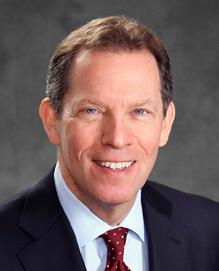
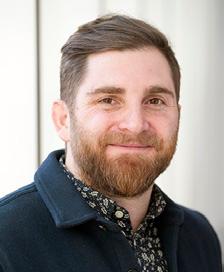
Daniel B. Polley, PhD, of Mass Eye and Ear, collaborated with a team of researchers to determine whether behavioral responses from psychoacoustic testing could distinguish patients with tinnitus from those who falsely report experiencing tinnitus. In a study published in Nature Digital Medicine, the research team tested 24 individuals with chronic subjective tinnitus, as well as 28 individuals who were instructed to fake their tinnitus, and leveraged deep learning platforms to compare their patterns of fingertip movement along a touchscreen as they completed behavioral tests. From these patterns, the team demonstrated an ability to identify individuals with tinnitus from those without the condition with an accuracy of 81 percent using approximately 10 minutes of reporting data.
According to Dr. Polley, findings from the study could encourage the development of more quantitative screening protocols and, in turn, mitigate the financial burden imposed on federal agencies and employers from fraudulent tinnitus claims.
CJ Smalt, JA Sugai, EA Koops, KN Jahn, KE Hancock, DB Polley. “Automatic identification of tinnitus malingering based on overt and covert behavioral responses during psychoacoustic testing.” Nature Digital Medicine. 2022; 5: 127. Doi: 10.1038/ s41746-022-00675-w

Long-term quality of life benefits for endoscopic sinus surgery
Endoscopic sinus surgery (ESS) has been shown to significantly improve the shortterm quality of life (QofL) of patients with chronic rhinosinusitis, an inflammatory disease of the nasal mucosa and the paranasal sinuses. Months after undergoing treatment, patients often report less severe sinonasal symptoms and less frequent sinus infections. However, the long-term QofL benefits of ESS are less certain.

George A. Scangas, MD, and Ralph B. Metson, MD, of Mass Eye and Ear, have taken major steps toward closing this knowledge gap in an ongoing prospective study that was published in the International Forum of Allergy & Rhinology. According to their study, several hundred patients with chronic rhinosinusitis who underwent ESS at Mass Eye and Ear between February 2011 and January 2021 demonstrated sustained improvements to their QofL years later. Upon evaluating the SNOT-22 surveys of 925 patients, the researchers found that average scores had significantly improved each year out to five years after surgery when compared to baseline preoperative scores.
From their findings, the researchers determined that successful long-term ESS outcomes depended on a number of variables. Those with greater preoperative disease burden, such as nasal polyps and environmental allergies, appeared to respond best to the procedure, and those with comorbid diabetes responded worse.
JC Simmonds, M Paz-Lansberg, G Scangas, R Metson. “Endoscopic Sinus Surgery for Chronic Rhinosinusitis: 22-Item Sino-Nasal Outcome Test 5-Year Results.”
International Forum of Allergy & Rhinology. 2021; Vol 12 (3): 257-265. Doi: 10.1002/alr.22886
34 HARVARD Otolaryngology
s
Magnetic stimulation of mice cochlea demonstrated for the first time
The modern cochlear implant (CI) bypasses non-functioning hair cells and electrically stimulates the residual nerves of the inner ear. Although most pediatric and adult CI users experience meaningful sound and speech perception, they struggle to hear clearly in noisy environments and have limited musical appreciation. Scientists have speculated that multichannel magnetic activation of the cochlear nerve could fine-tune cochlear implants so patients can hear more clearly in challenging listening environments.
A study published in eLife tested whether flexible, bent-wire magnetic coils could drive narrower auditory responses in mice compared to traditional designs, thereby fine-tuning sound clarity. The study was co-authored by several investigators from multiple institutions, including Daniel J. Lee, MD, FACS, of Mass Eye and Ear, and was led by Shelley Fried, PhD, of Massachusetts General Hospital. Findings revealed that magnetic coils could support an approximately 60 percent narrower activation of mice cochlea than electrical stimulation could.
The study was the first to show that magnetically stimulating the cochlea of mice is feasible and can produce improved sound clarity compared to electrical stimulation used by the modern CI. Findings from the study could pave the way for a new generation of CIs based on multi-channel magnetic micro coils.
J Lee, R Seist, S McInturff, et al. “Magnetic Stimulation
Allows Focal Activation of the Mouse Cochlea.” eLife. 2022; 11: e76682. Doi: 10.7554/eLife.76682
Measuring the health utility of hair transplants among patients with alopecia
Hair transplants have become one of the most popular treatments for hair loss. The treatment consistently improves the
psychosocial health of patients, and clinicians have sought to measure these benefits using quantifiable health utility scores. While scoring metrics have successfully quantified the negative impact of hair loss from the perspective of those unaffected by the condition, none have accounted for the perspective of patients with hair loss.
Linda N. Lee, MD, of Mass Eye and Ear, and a team of researchers including residents Roy Xiao, MD; Ciersten A. Burks, MD; and Rui Liu, MD, became the first to quantify this missing perspective when they demonstrated the benefits of hair transplants in patients with hair loss.


In a two-year prospective study published in Aesthetic Plastic Surgery, the researchers compared the health utility measurements of patients with alopecia to laypeople. The health utility measures were quantified using the visual analog scale, standard gamble and time trade-off. They were then converted to quality-adjusted life years.
Results from the study not only confirmed that alopecia negatively influences quality of life, but also suggested that the true experience of patients with hair loss is likely more taxing than what laypeople regularly perceive.

R. Xiao, CA Burks, J Yau, et al. “Health Utility Measures Among Patients With Androgenetic Alopecia After Hair Transplant.” Aesthetic Plastic Surgery. 2022; Doi: 10.1007/ s00266-022-03066-4
Surgical outcomes of decompression for recurrent facial palsy
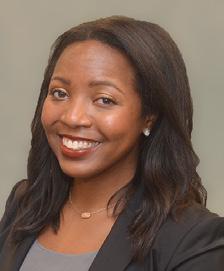

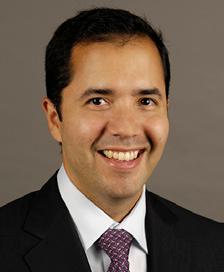
Facial nerve decompression is a surgical option for patients seeking treatment for recurrent facial paralysis (RFP). During the procedure, surgeons remove bone surrounding the facial nerve so that it

can receive improved blood supply, less compression and more room for recovery.
Few recorded outcomes of the surgery exist, which prompted Tessa A. Hadlock, MD, and Felipe Santos, MD, of Mass Eye and Ear, to launch a retrospective study on patients who underwent the treatment at Mass Eye and Ear’s Facial Nerve Center from 2001 to 2021. During the study, which was published in The Laryngoscope, clinicians assessed the records of 132 patients with RFP and analyzed the etiology, facial nerve function and recurrence rates of each case, as well as the pre- and postoperative audiometric outcomes of patients who were surgically managed. Of the patients evaluated, 6.8 percent had elected for surgical treatment.
Overall, patients who underwent the surgery reported significantly less severe incidents of RFP than their counterparts who did not undergo the procedure. These patients also reported fewer RFP episodes after their surgery, further validating facial nerve decompression as an effective treatment for facial paralysis.
Y Song, C McHugh, J Tirino, T Hadlock, F Santos. “Middle Fossa Decompression for Recurrent Facial Palsy: Prevalence and Surgical Outcomes.” The Laryngoscope. 2022; Doi: 10.1002/lary.30344
Prognosis of HPV head and neck cancers associated with HPV genetic variation
Clinicians often use clinicopathological variables to help select specific treatments. These variables, such as the stage of a patient’s cancer, are referred to as prognostic indicators; they help predict the likelihood of a patient’s response to treatment or survival. Unfortunately, no reliable personalized prognostic indicators exist for human papillomavirus oropharyngeal cancer (HPV-OPC), a head and neck cancer that has rapidly become more prevalent in the United States.
35 HARVARD Otolaryngology
sRESEARCH ADVANCES
Daniel L. Faden, MD, FACS, of Mass Eye and Ear, along with a team of researchers from the University of Kentucky, University of Pittsburgh and the National Institutes of Health, conducted a multiinstitutional study examining whether genetic variation within the HPV genome could predict survival in HPV-OPC cases. According to the study, which was published in Annals of Oncology and evaluated more than 400 patients, HPV-OPC patients with one or more high-risk variants had a median survival time that was 15 years shorter than patients without a variant.

This study, which Dr. Faden co-authored, was the first large whole-genome sequencing study of the HPV genome in HPV-OPC. The association found between HPV genetic variation and HPV-OPC prognosis could one day help clinicians better personalize cancer treatments for their patients.
KAL Kuhls, DL Faden, et al. “Genetic Variation Within the Human papillomavirus type 16 Genome Is Associated With Oropharyngeal Cancer Prognosis.” Annals of Oncology. 2022; Vol 33 (6): 638-648. Doi: 10.1016/j. annonc.2022.03.005
Systematic review of novel collaborative AI methodology formally authored
Artificial intelligence (AI) models currently rely on large quantities of high-quality datasets to function. While sharing data across health care institutions would help researchers develop more models, issues surrounding data privacy have limited collaborative studies. Federated learning, a new approach to building AI, has allowed institutions to work together to develop machine learning models while keeping their data hidden behind their respective firewalls.

To better understand the current state of federated learning in health care, Matthew G. Crowson, MD, of Mass Eye and Ear, led an interinstitutional research team on a systematic review of published studies that had successfully developed a federated learning platform for research

problems involving biomedical data. The research team, which published its review in PLOS Digital Health, found that federated learning had linked research teams from all over the world and had been applied to the modelling of a wide variety of biomedical datasets.
According to Dr. Crowson, findings from the review suggest that opportunities exist to expand and improve the collaborative model approach, which could lead to new and improved machine learning models in the future.
MG Crowson, D Moukheiber, AR Arevalo, et al. “A Systematic Review of Federated Learning Applications for Biomedical Data.” PLOS Digital Health. 2022; 1 (5). Doi: 10.1371/journal.pdig.0000033
The effects of sleep disorders on employment and income
Sleep disorders, such as sleep apnea and insomnia, can adversely affect one’s overall health. The disorders impact a wide variety of medical issues, ranging from a person’s cardiovascular health to their mental wellbeing. Daytime sleepiness, mental fog, poor performance at school or work and other residual effects of the conditions can upend the daily lives of millions of people— so much so, that it begins to impact their career and income.
In a study published in the Journal of Clinical Sleep Medicine, Neil Bhattacharyya, MD, FACS, and Phillip A. Huyett, MD, both of Mass Eye and Ear, found significantly higher indirect costs associated with sleep disorders in a cohort of 33,000 adults aged 18to-64. According to their findings, adults with sleep disorders earn on average about $2,500 less per year than adults without them and are more likely to be on supplemental income like Social Security and welfare.
Results from the study affirm prior research that suggests sleep disorders can negatively affect a person’s economic wellbeing. The conservative estimate of sleep disorder
prevalence among those examined in the study has since led researchers to believe the economic impact is much higher.
P Huyett, N Bhattacharyya. “The Association Between Sleep Disorders, Employment, and Income Among Adults in the United States.” Journal of Clinical Sleep Medicine. 2022; Vol 18 (8): 1967-1972. Doi: 10.5664/jcsm.10040
Understanding how peripheral vestibular damage affects velocity storage
If a child rotates their bodies with their eyes closed at a constant velocity, they can feel an initial, strong sense of motion. While this sensation naturally decays, individuals who are older, or who have vestibular damage, will experience a faster decay than those who are younger, or who do not have such damage. The exact reason why vestibular damage and age causes the decay to accelerate is a mystery.
In a recent study published in the Journal of the Association for Research in Otolaryngology, a team of researchers led by Faisal Karmali, PhD, of Mass Eye and Ear, used computational neuroscience approaches to explain why these responses are different in individuals with unilateral peripheral vestibular damage. Building on past work, the team showed that the brain aims to minimize error in its estimate of motion by changing the central dynamic processing of vestibular signals. The team found that unilateral peripheral damage reduces the signal-to-noise ratio of vestibular inputs to the brain and that the optimal response to minimize error was to increase the rate of decay.


Results from the study provide a mechanistic explanation for clinical observations and changes in diagnostic parameters. Their findings support the hypothesis that the brain continuously optimizes vestibular processing and highlight the importance of neural noise in vestibular pathology and aging.
A Madhani, RF Lewis, F Karmali. “How Peripheral Vestibular Damage Affects Velocity Storage: A Causative Explanation.” Journal of the Association for Research in Otolaryngology. 2022; 23: 551-566. Doi: 10.1007/s10162-022-00853-3
36 HARVARD Otolaryngology
Connect with us on LinkedIn: All former residents and fellows are invited to join the new Harvard Otolaryngology–Head and Neck Surgery Alumni Group. Please visit our online calendar for information about upcoming events in the Harvard Medical School Department of Otolaryngology–Head and Neck Surgery. oto.hms.harvard.edu/event-calendar

U.S. News & World Report “Best Hospitals”
In its 2022-2023 “Best Hospitals” issue, U.S. News & World Report named Mass Eye and Ear and Brigham and Women’s Hospital top hospitals for ear, nose and throat care. Mass Eye and Ear was ranked #4 in the nation for ear, nose and throat care, and Brigham and Women’s Hospital was ranked in the Top 30. Mass Eye and Ear remained #1 in New England, a distinction the hospital has held since the inception of the rankings in 1990.
 Photo by Garyfallia Pagonis
Photo by Garyfallia Pagonis
News from the Harvard Medical School Department of Otolaryngology–Head and Neck Surgery 243 Charles Street, Boston, MA 02114

Beth Israel Deaconess Medical Center
Boston Children’s Hospital
Brigham and Women’s Hospital
Massachusetts Eye and Ear
Massachusetts General Hospital
N. READING, MA Permit NO. 121
NONPROFIT U.S. Postage PAID


































 —Sharon Kujawa, PhD
—Sharon Kujawa, PhD




























































































 Photo by Garyfallia Pagonis
Photo by Garyfallia Pagonis




